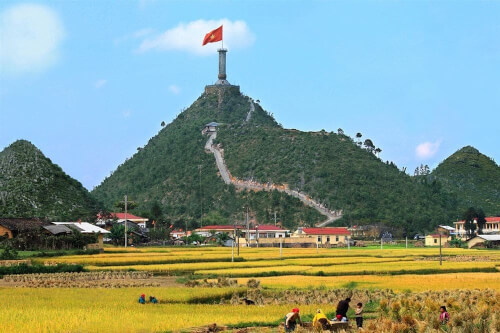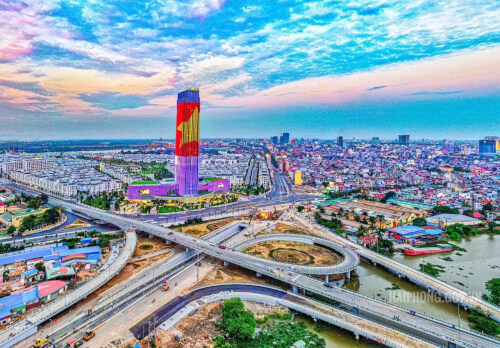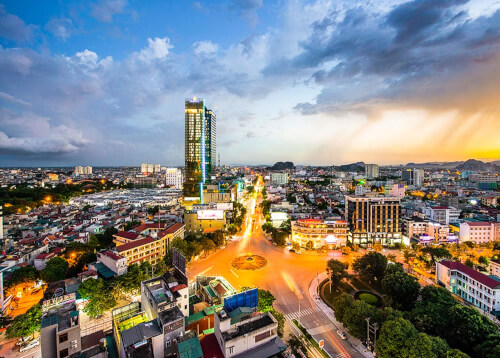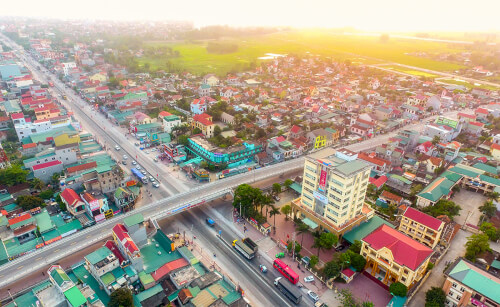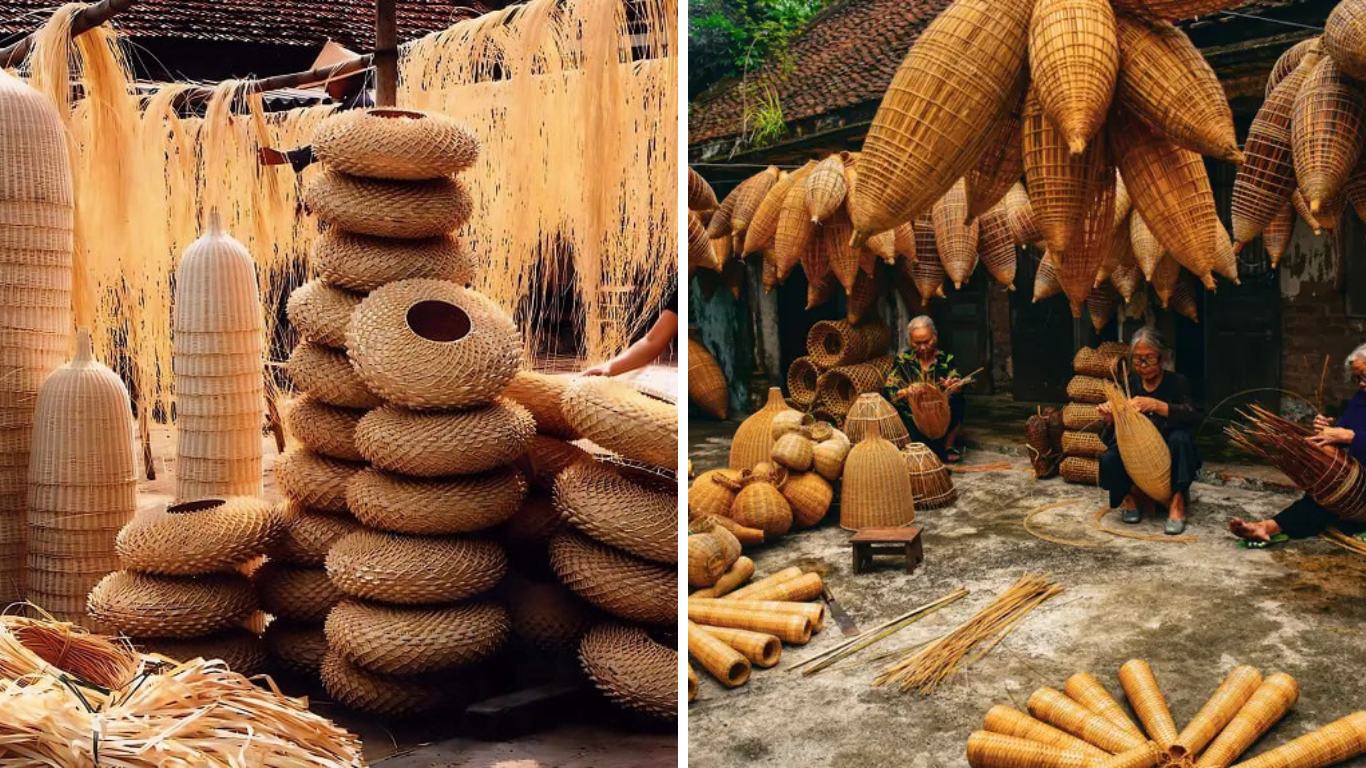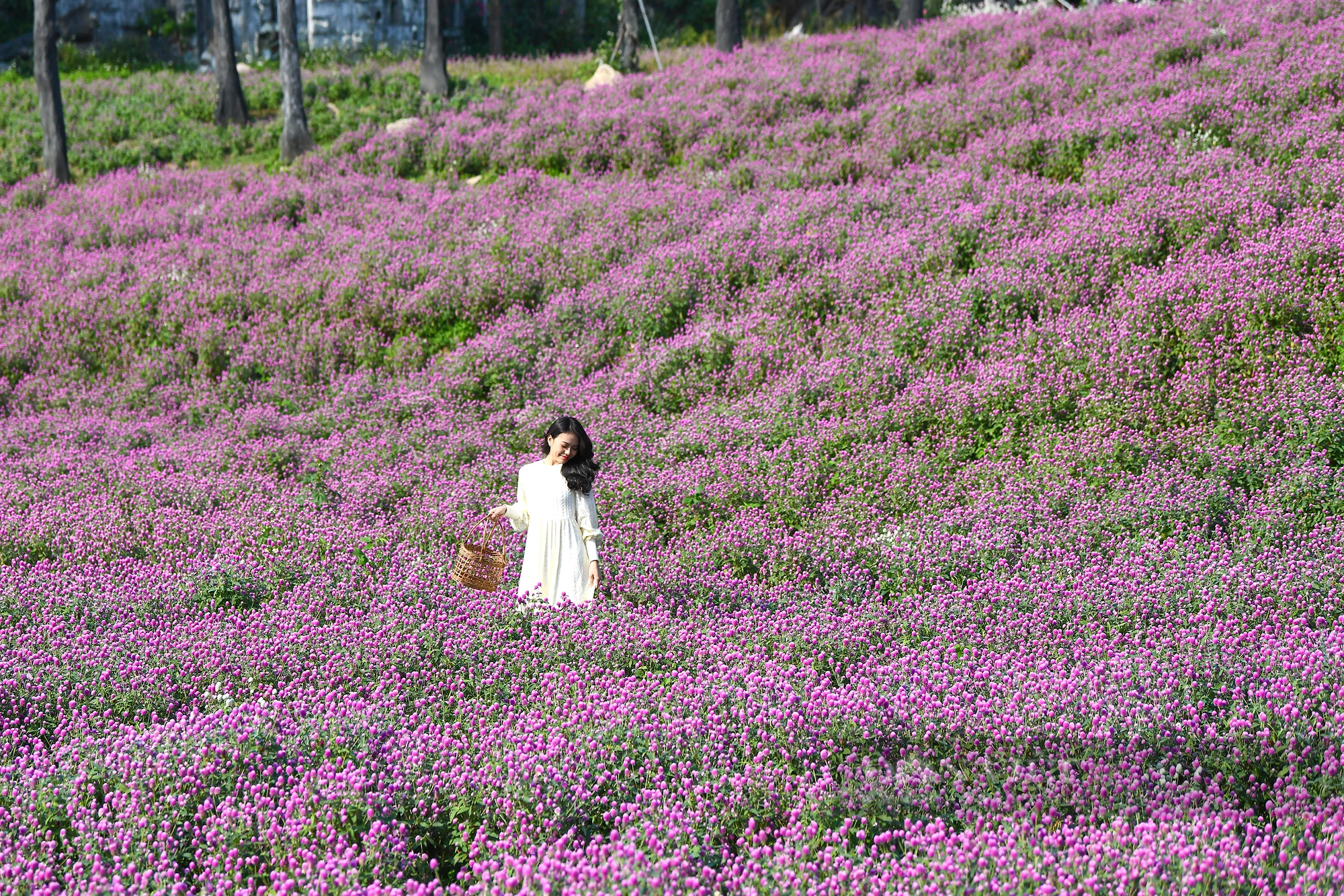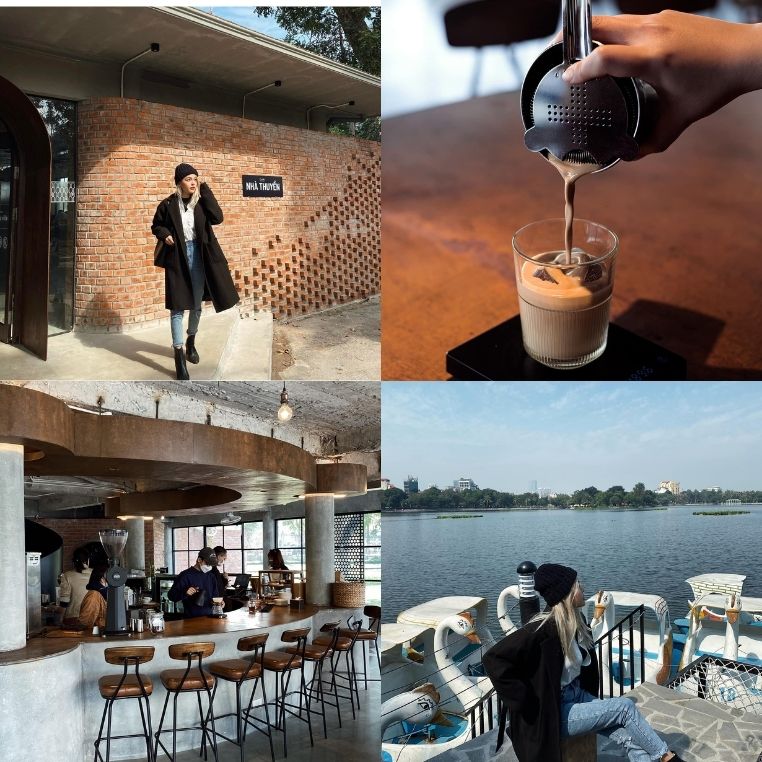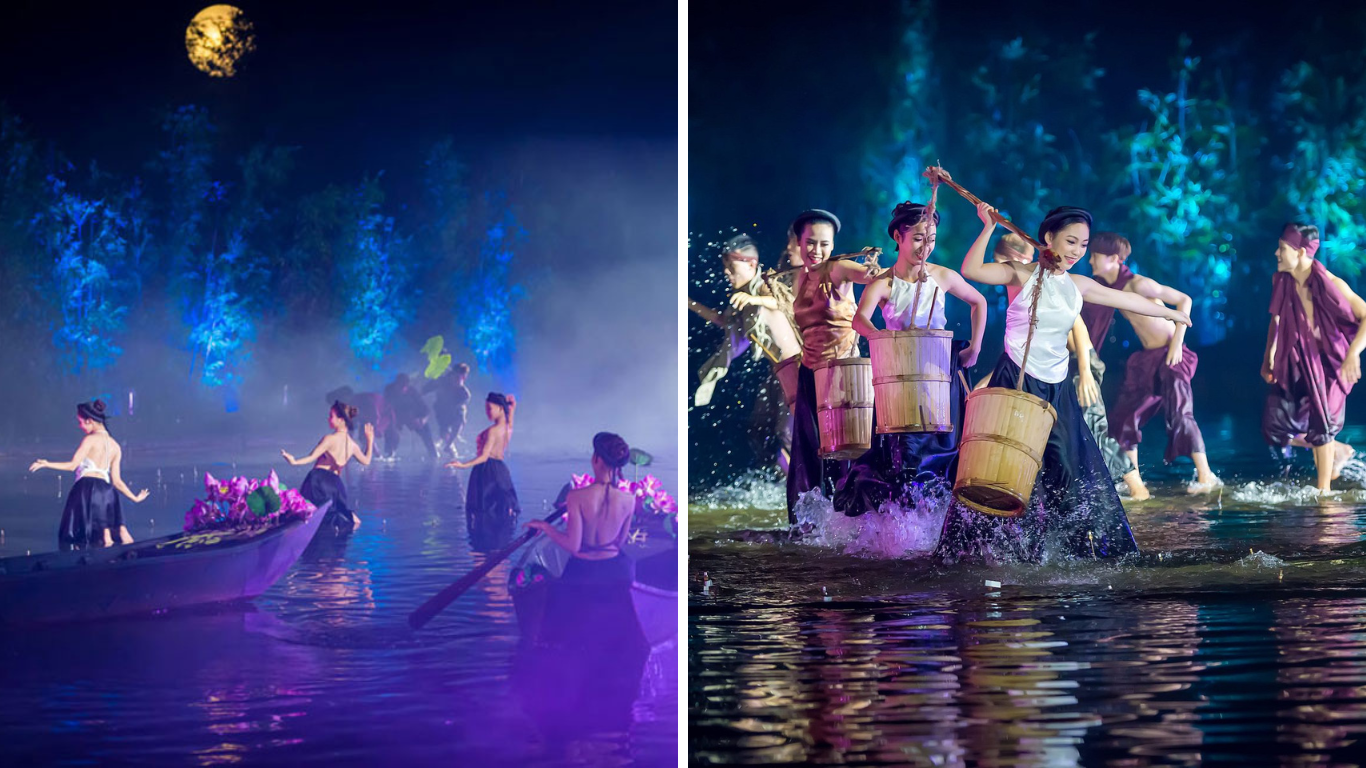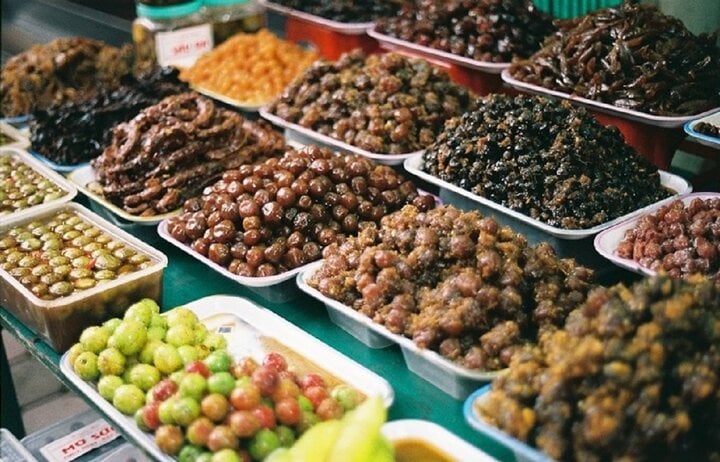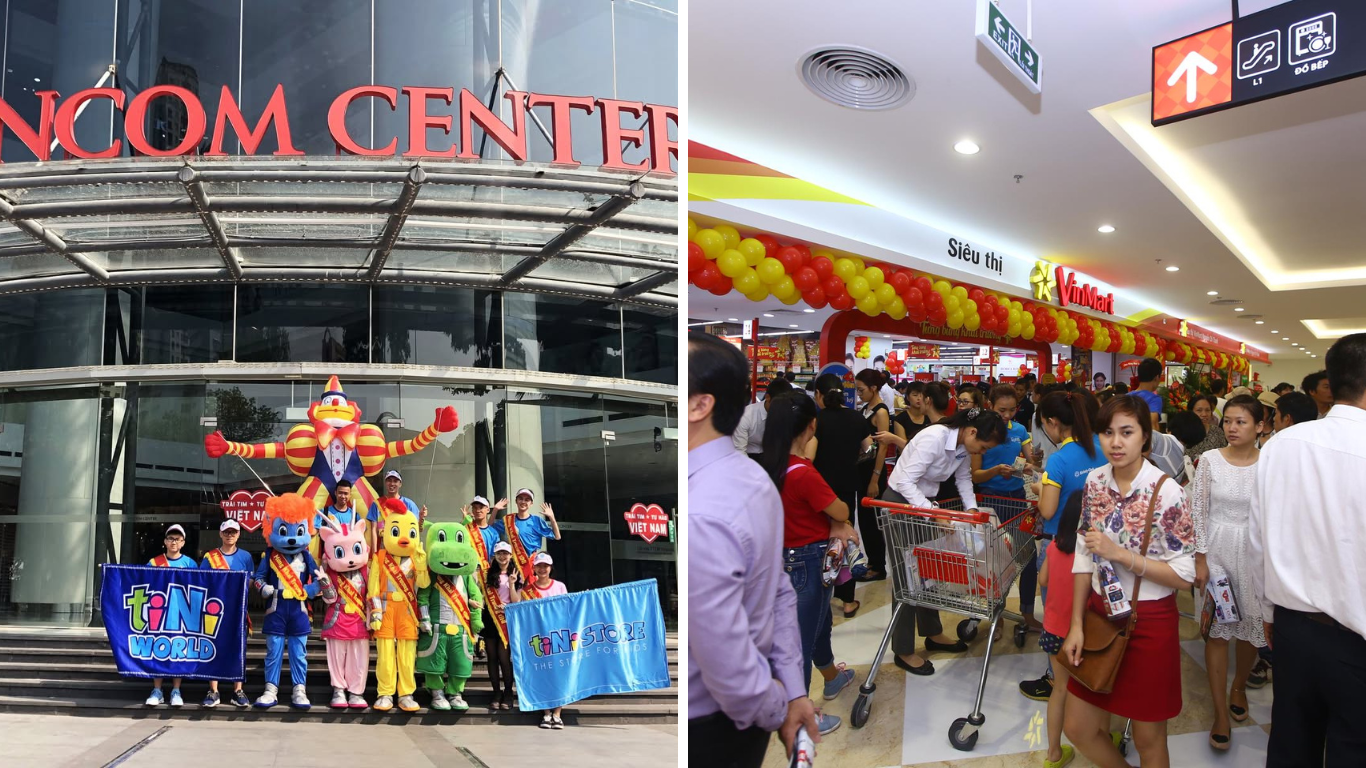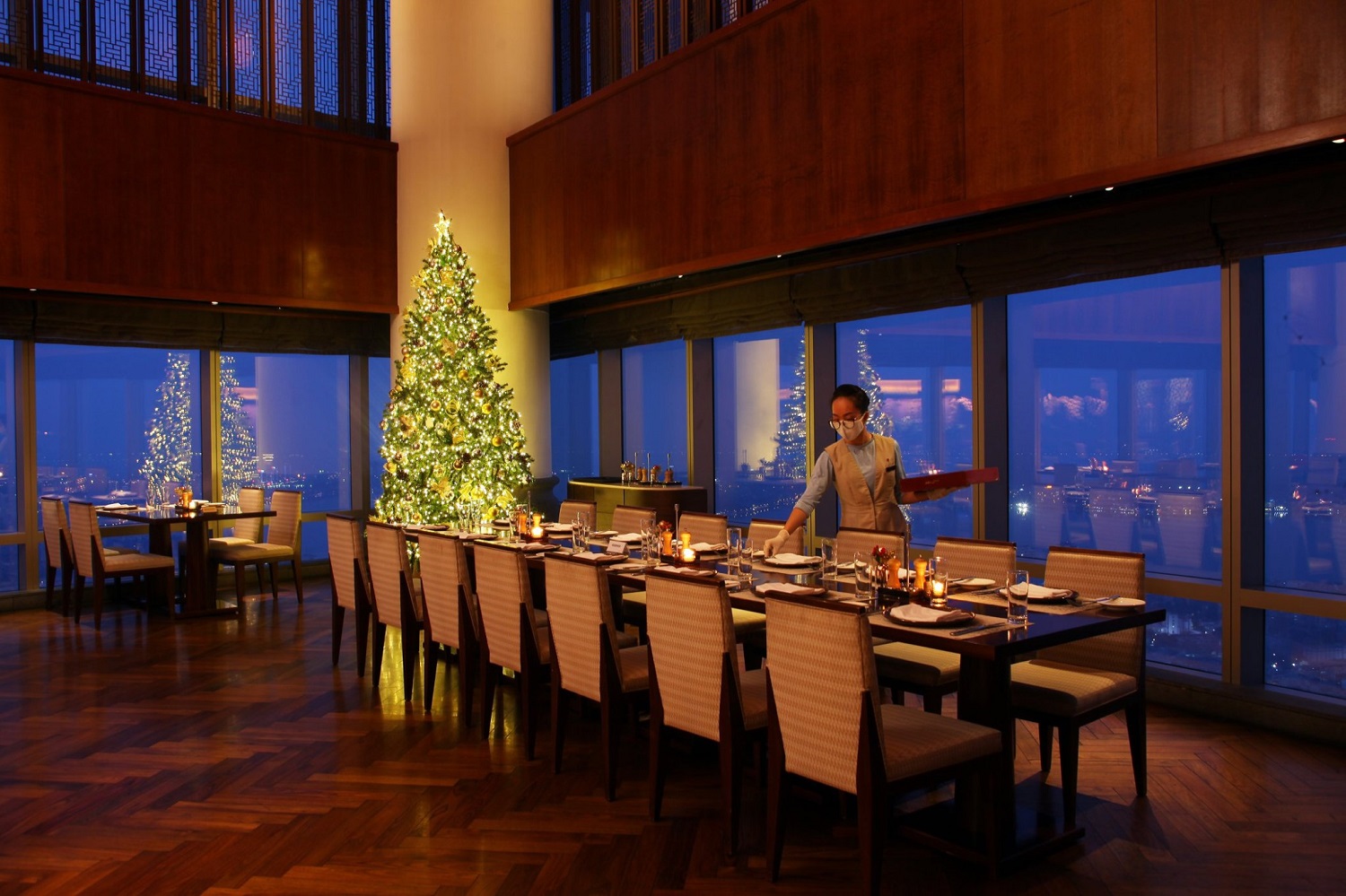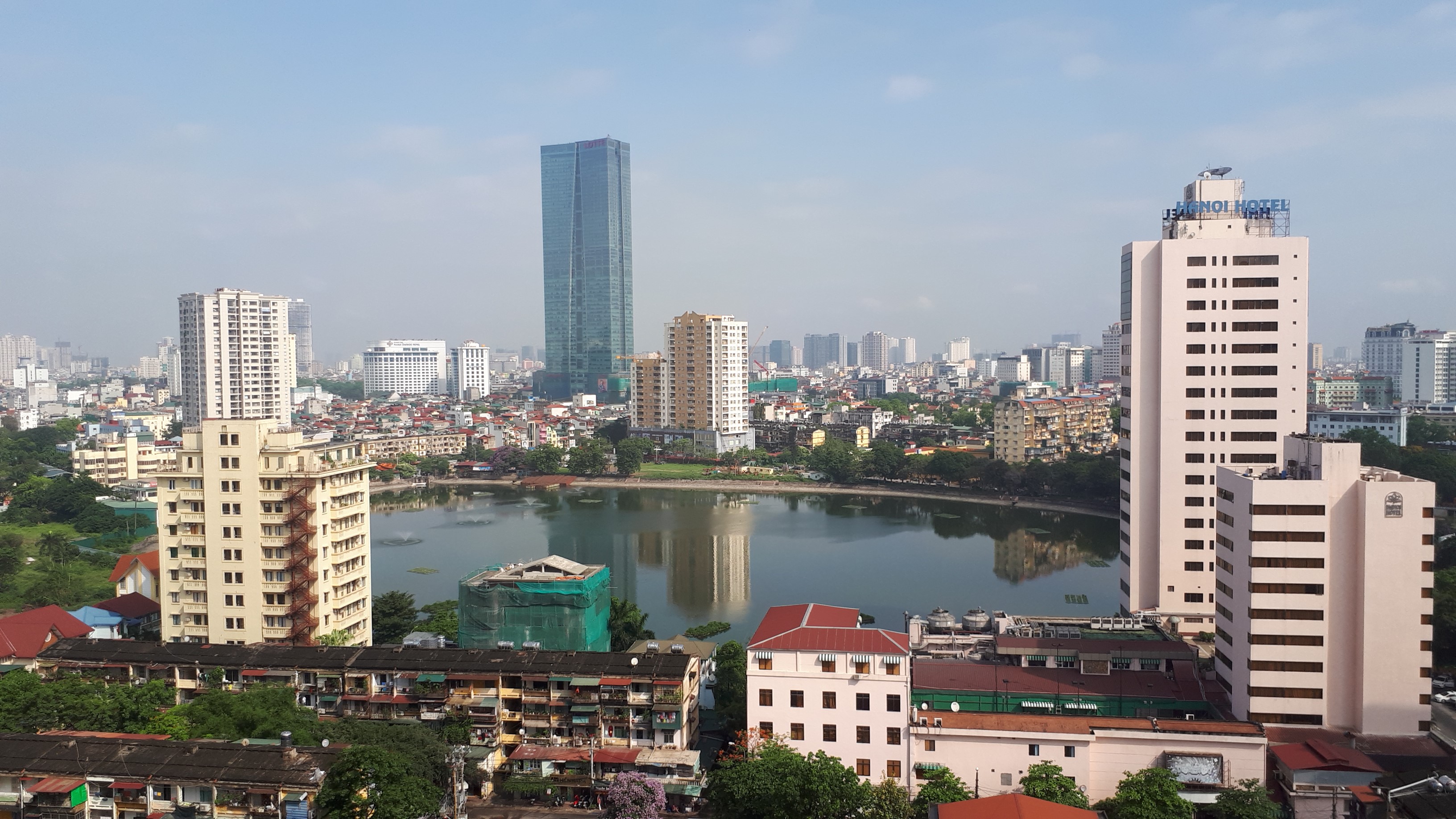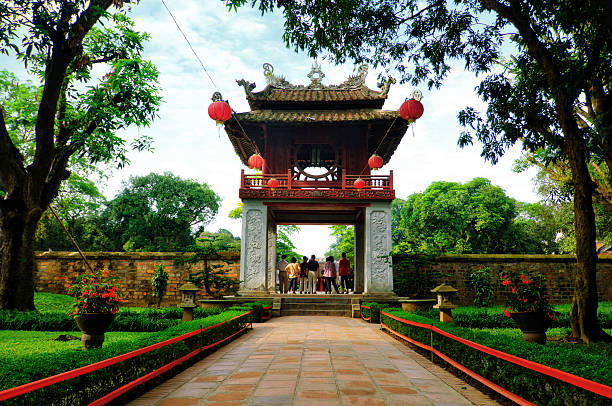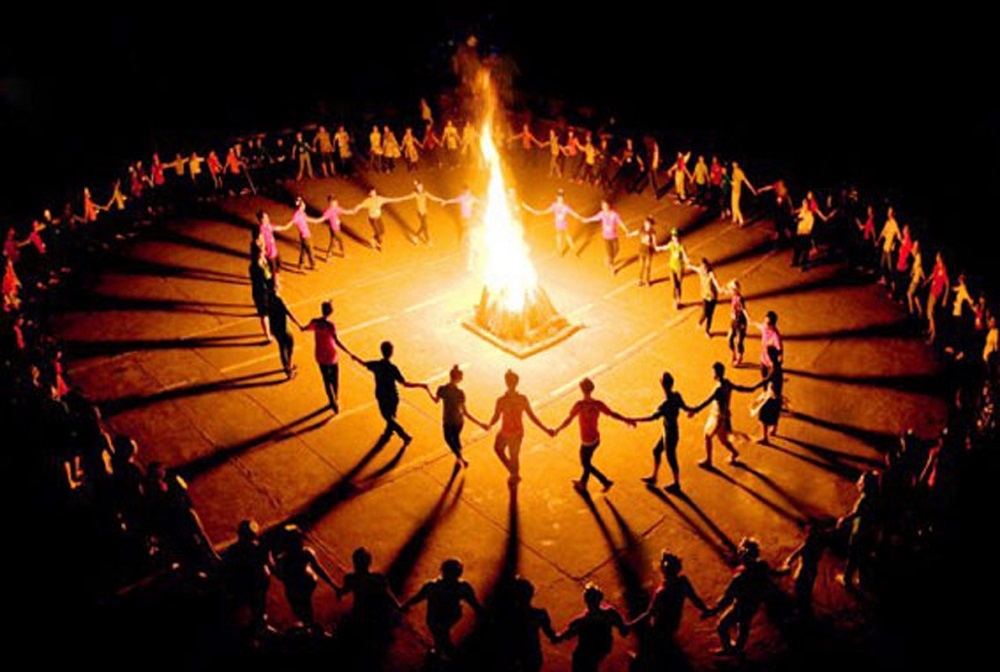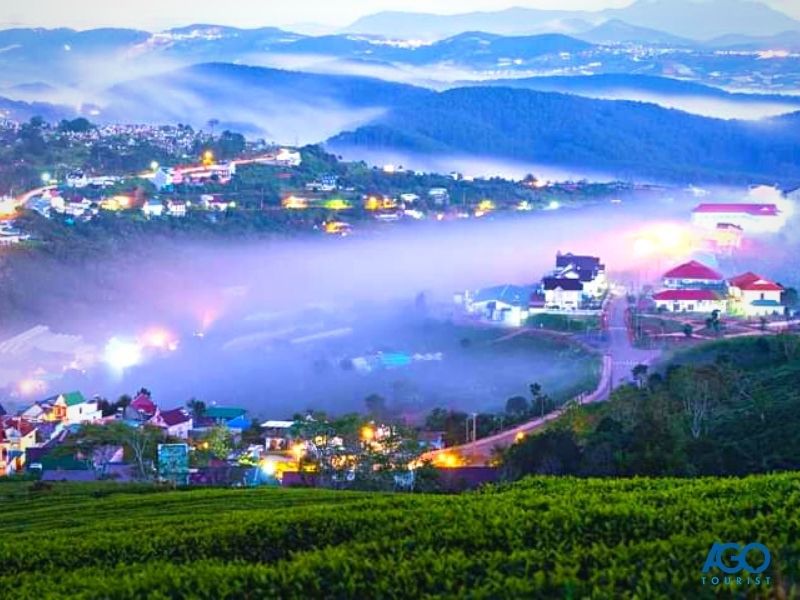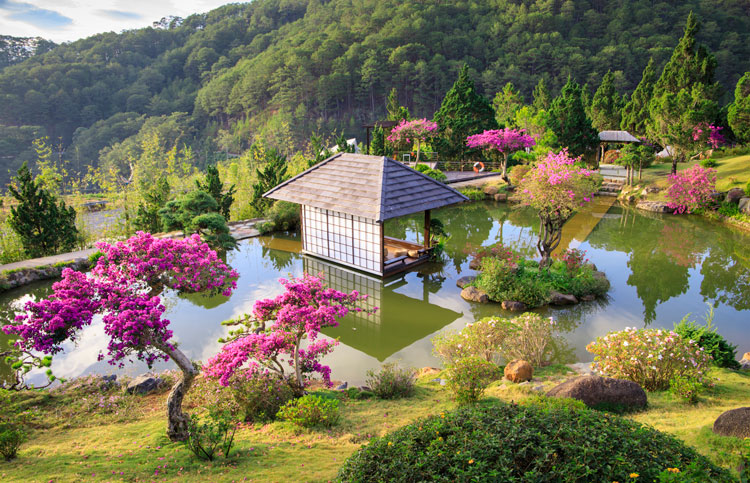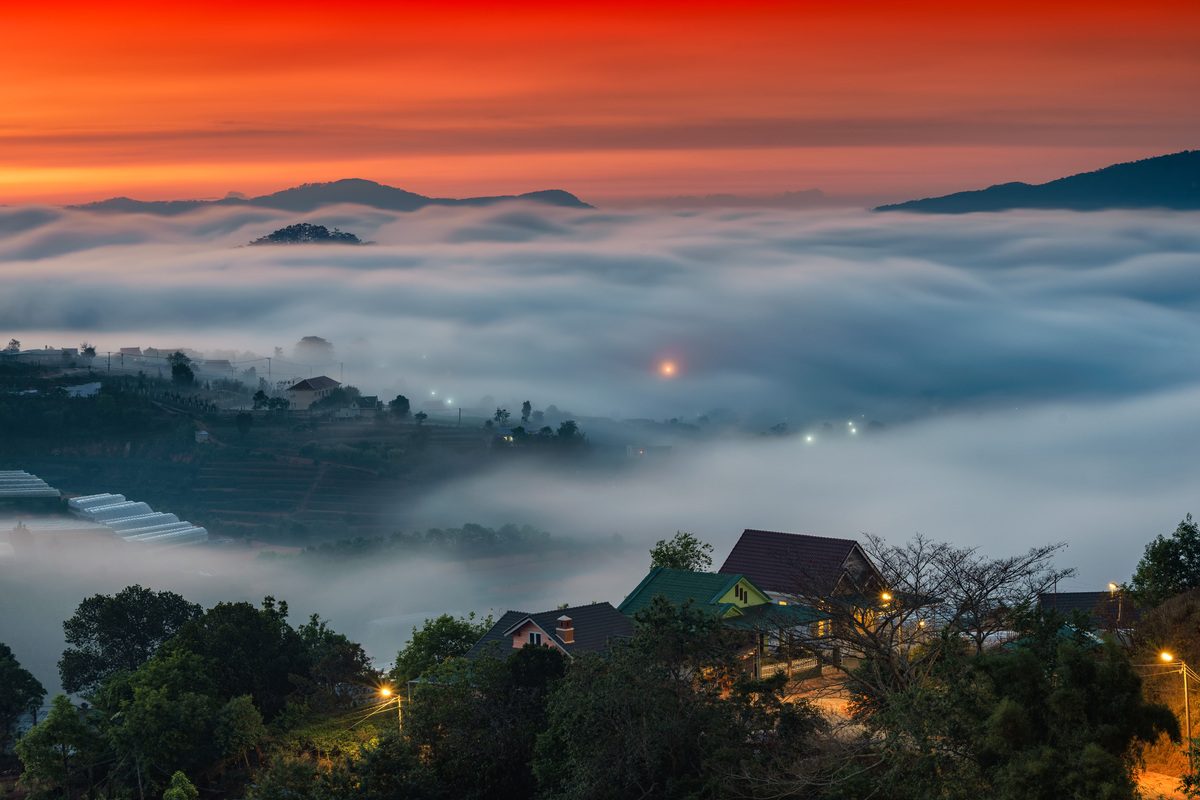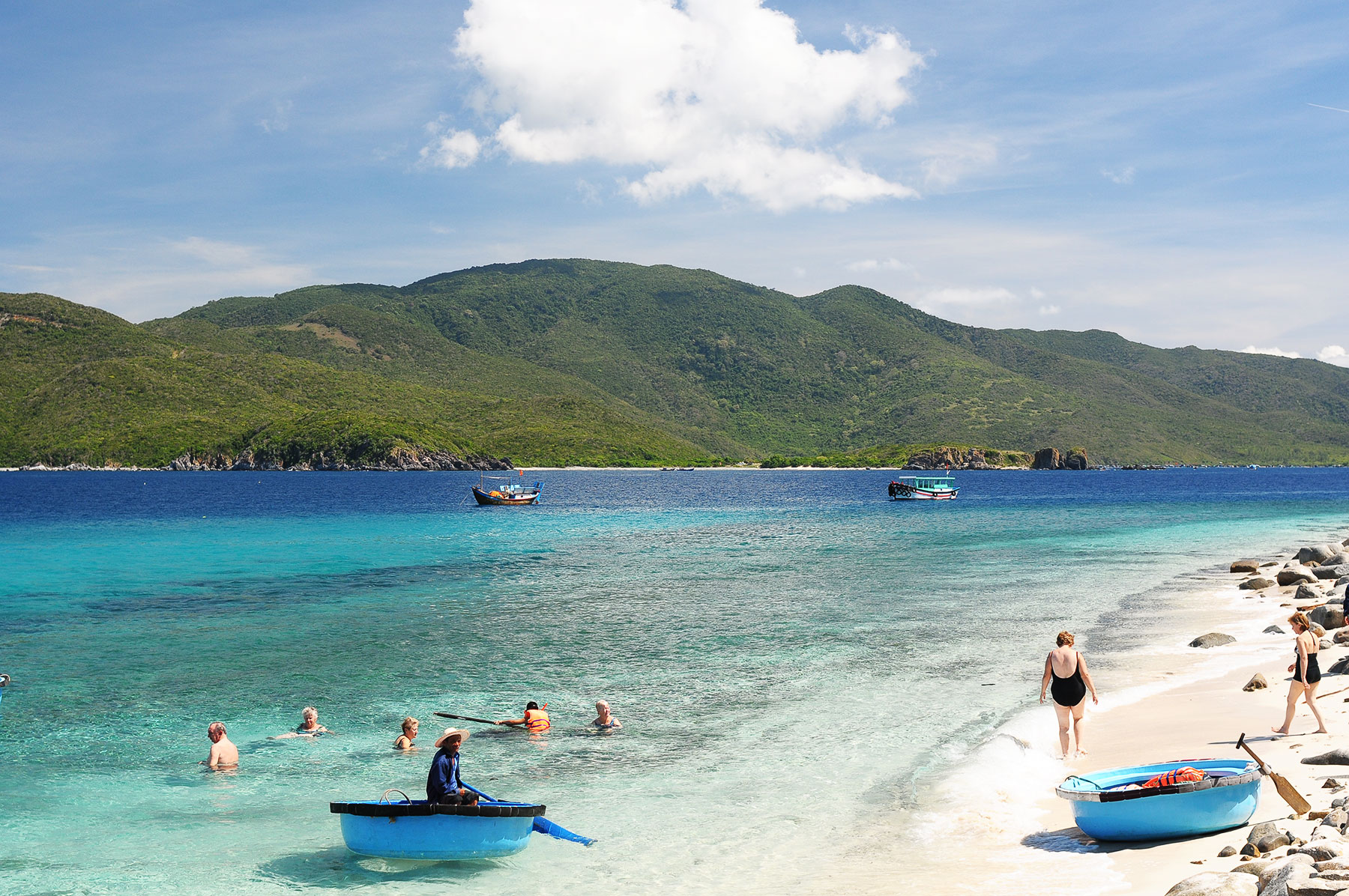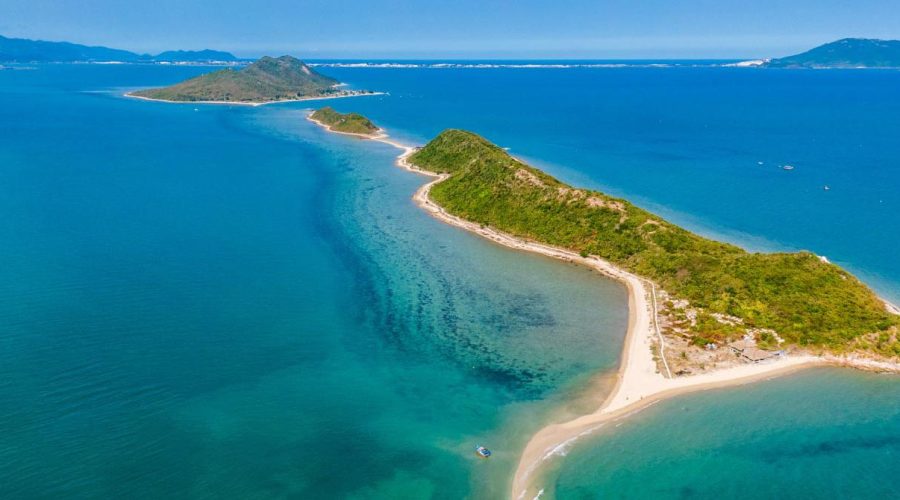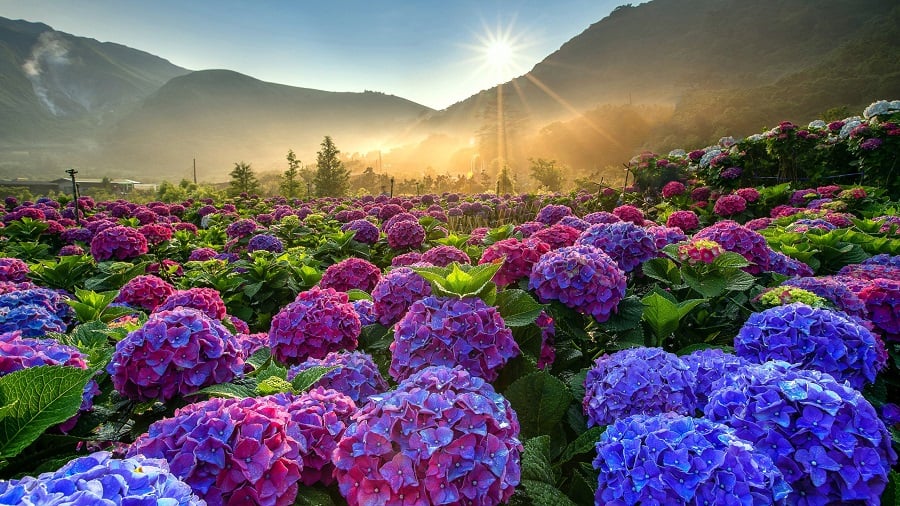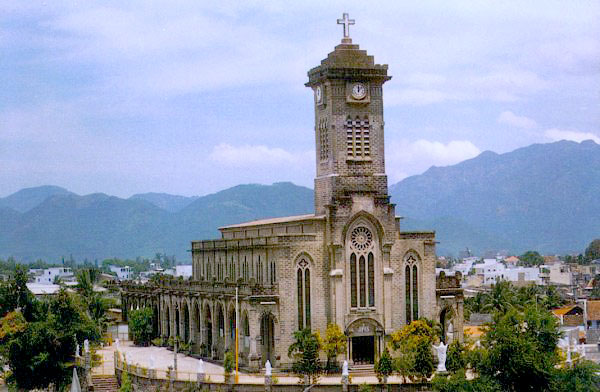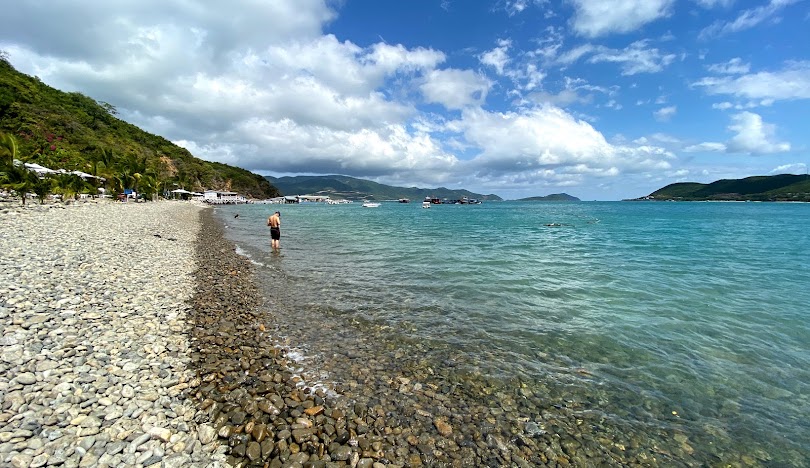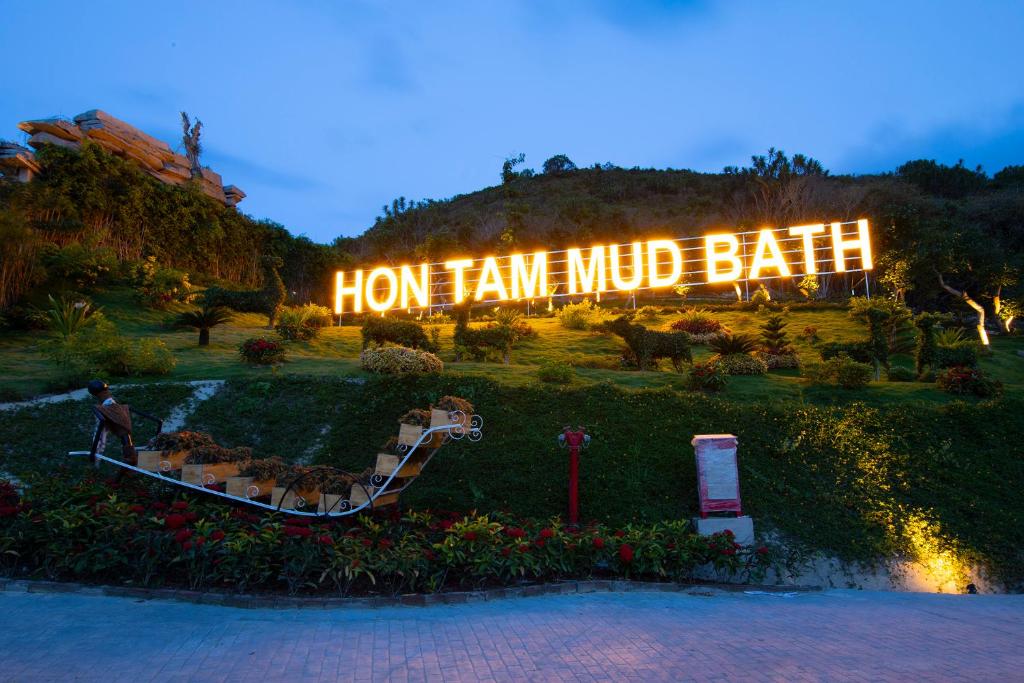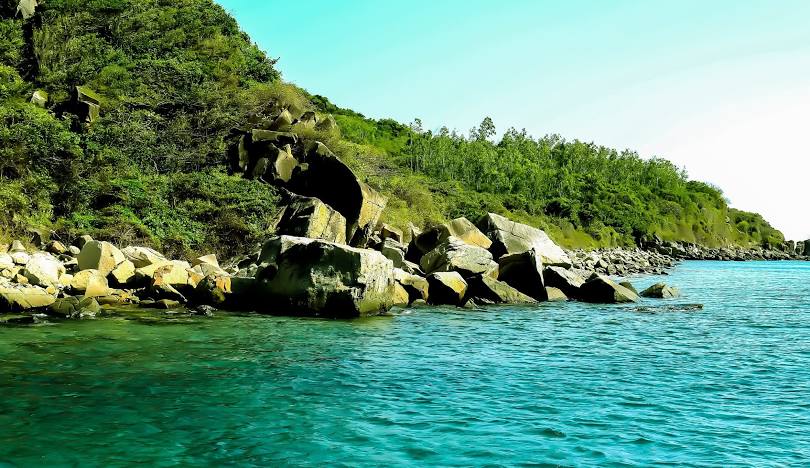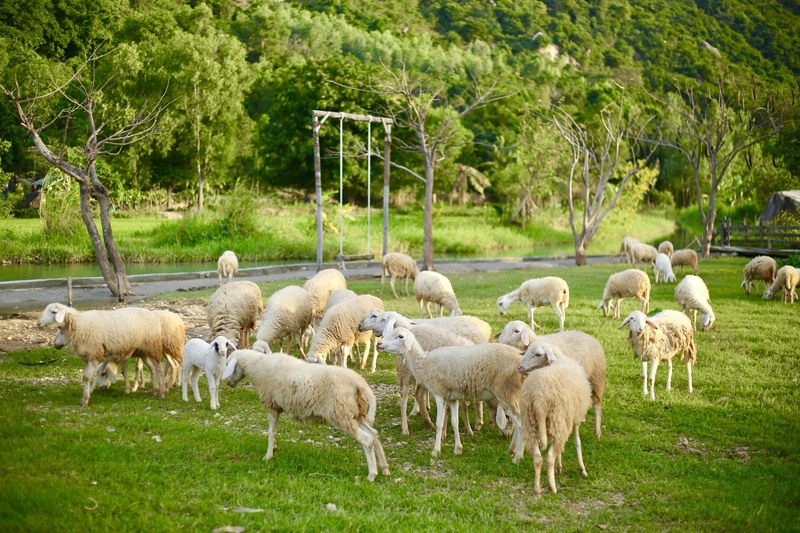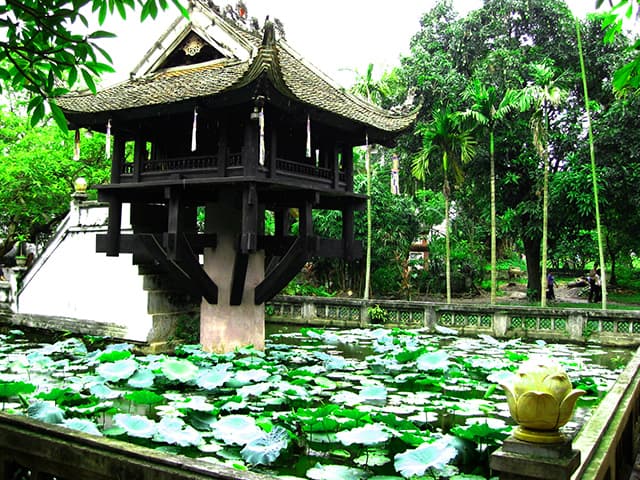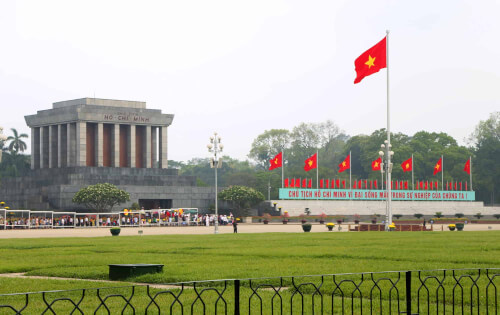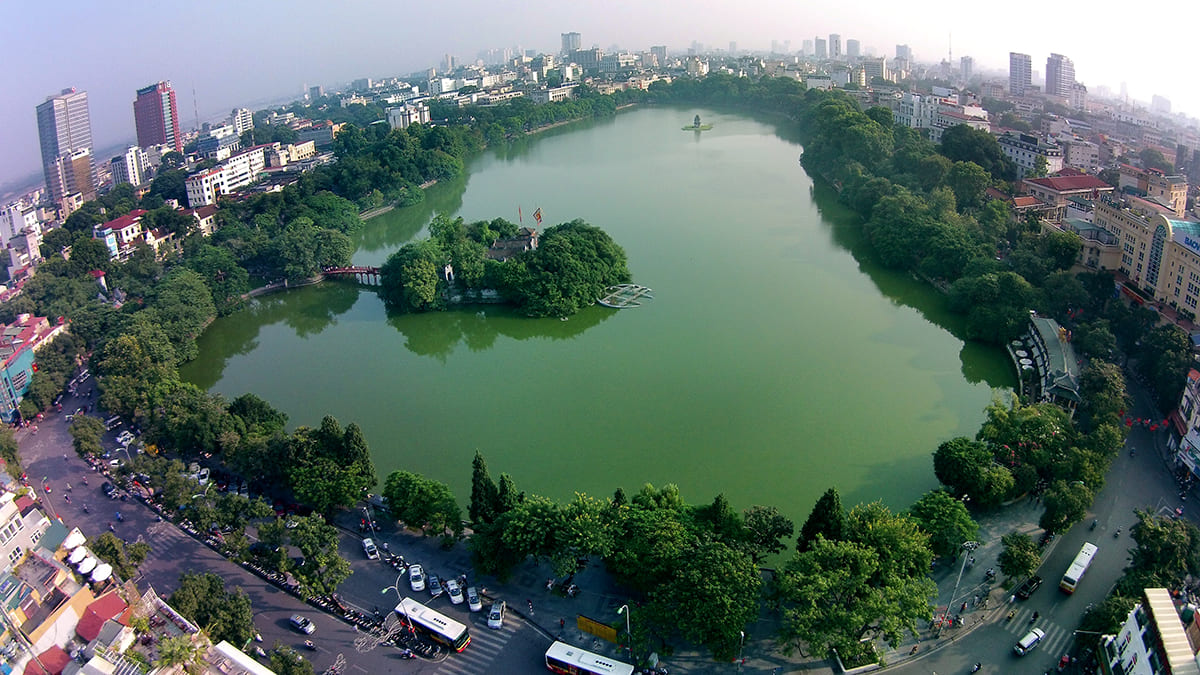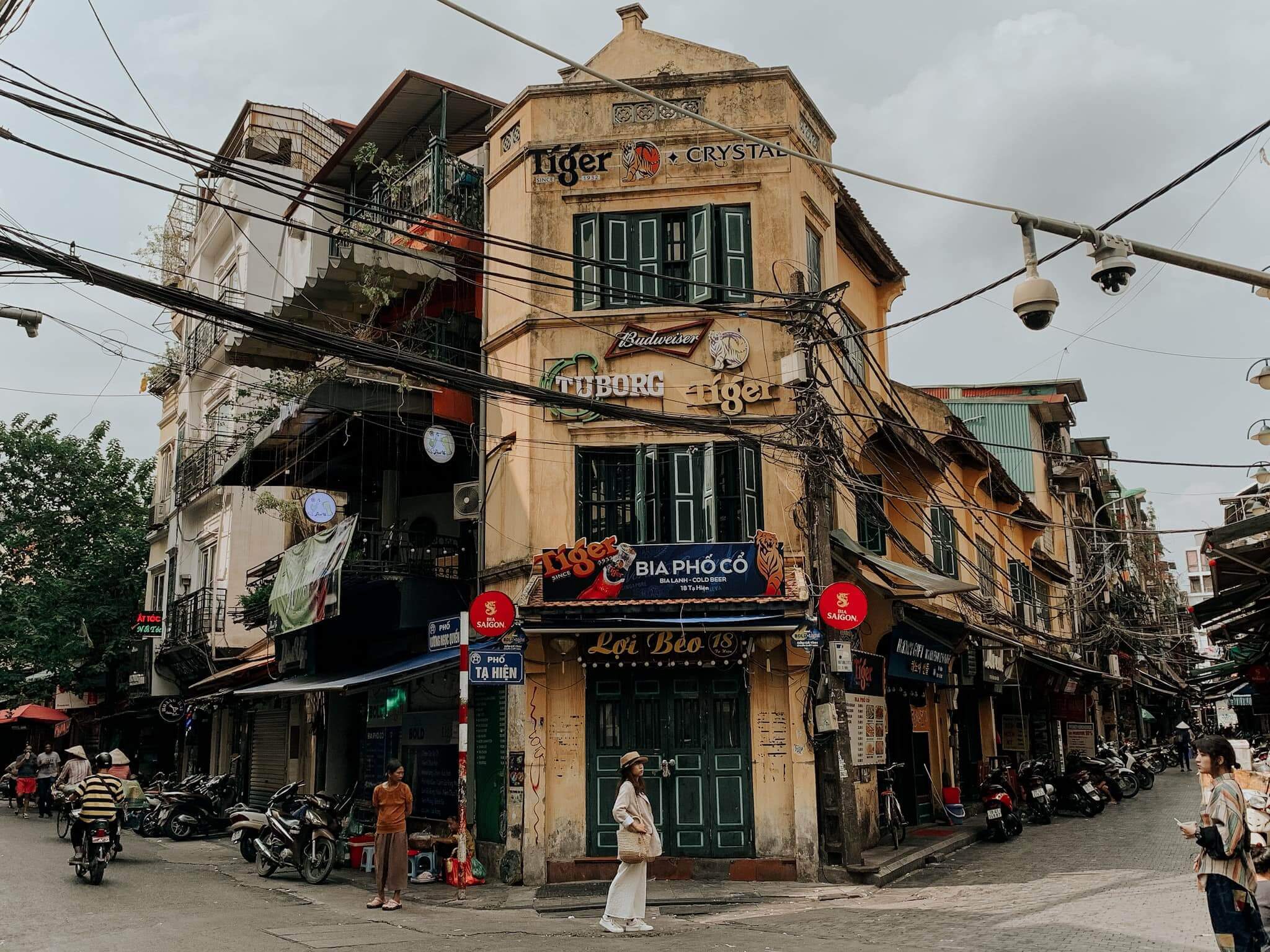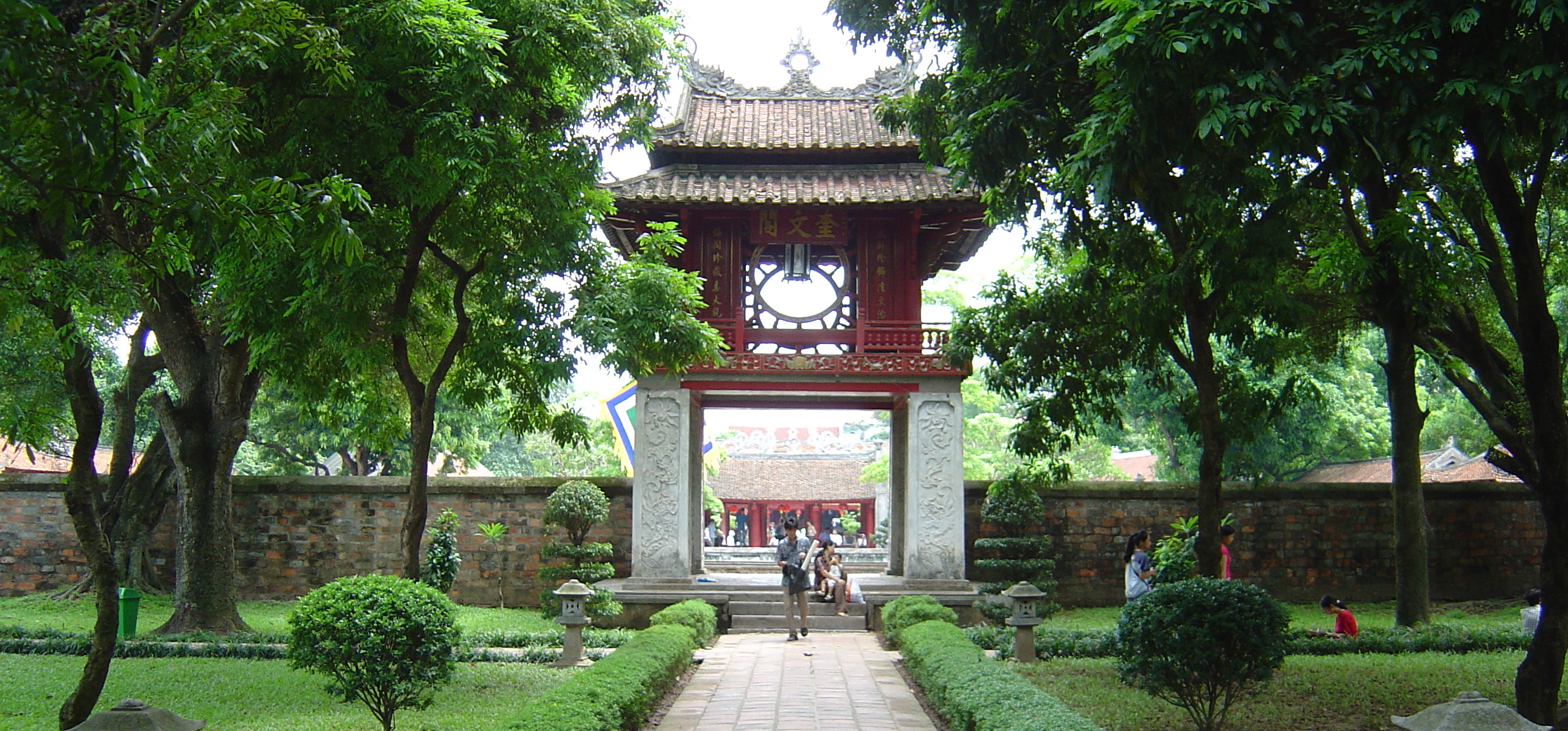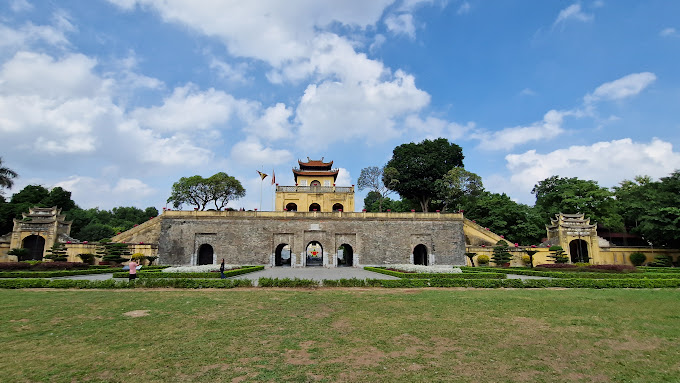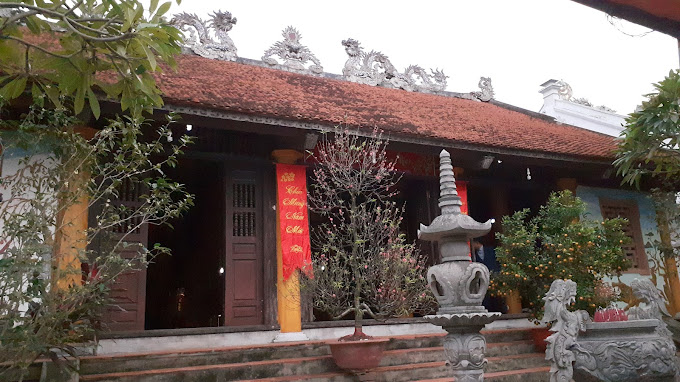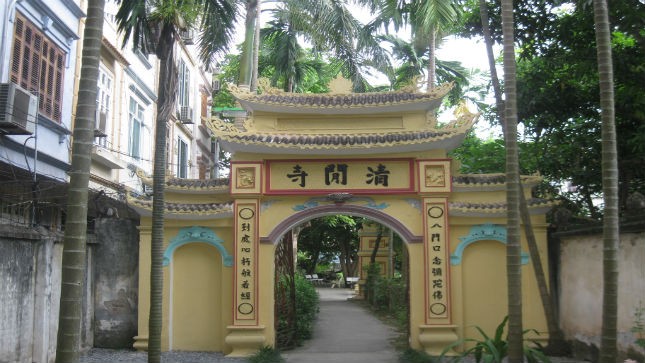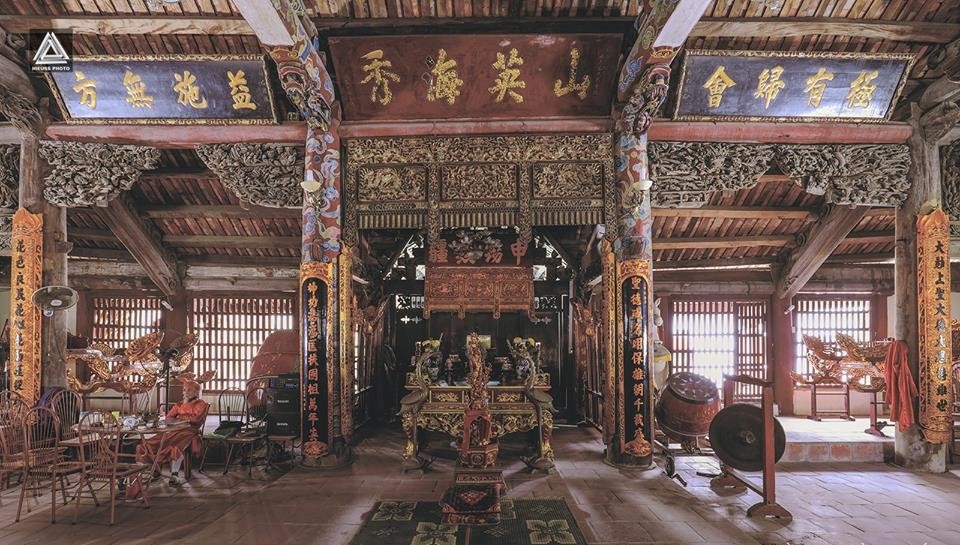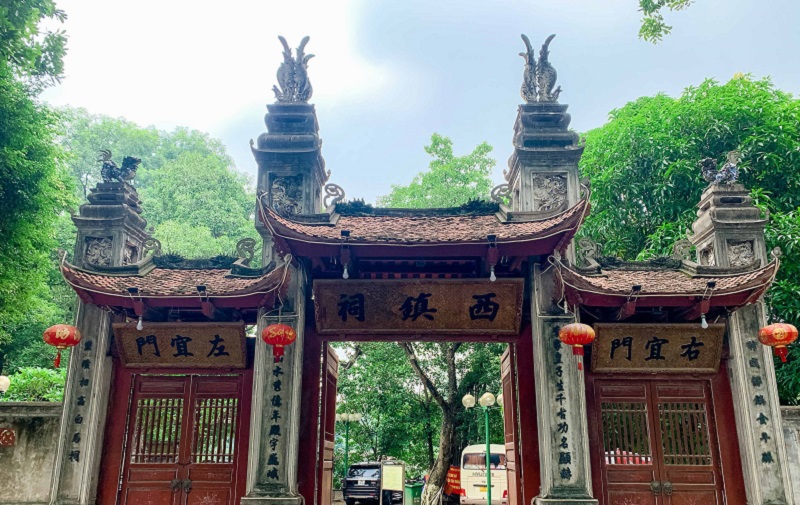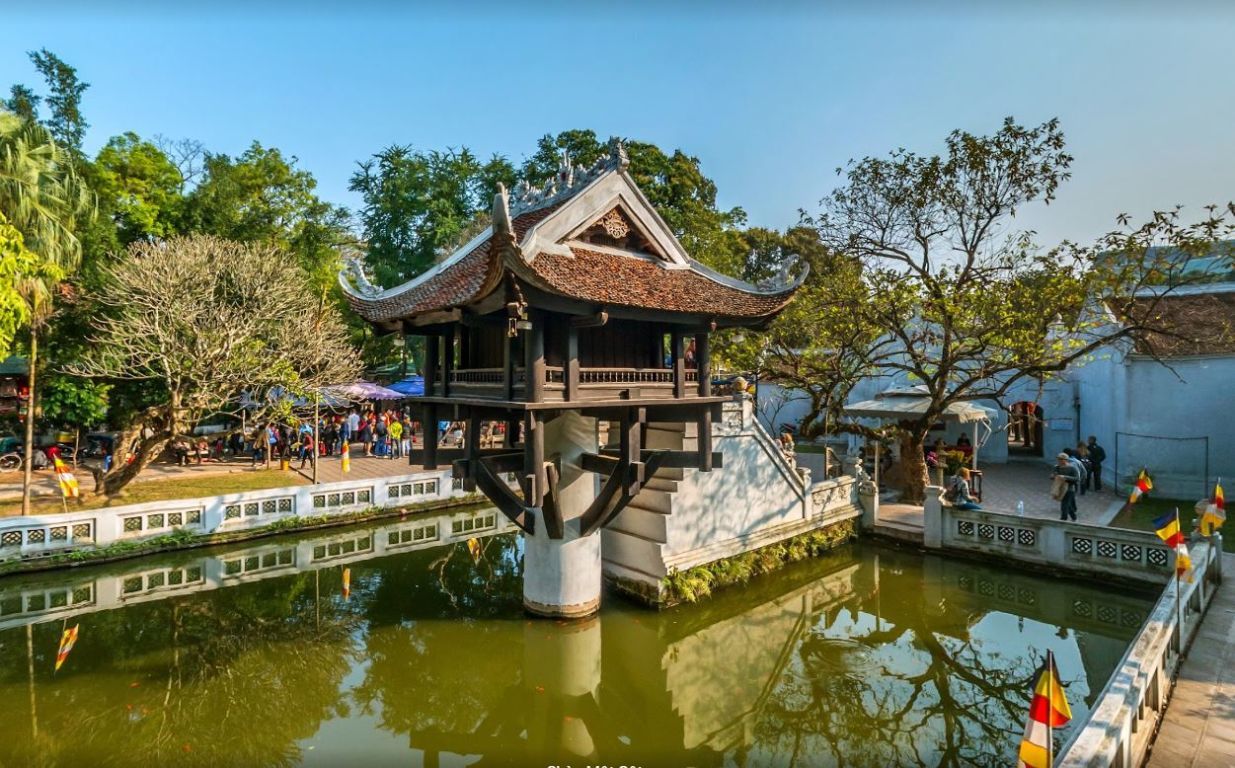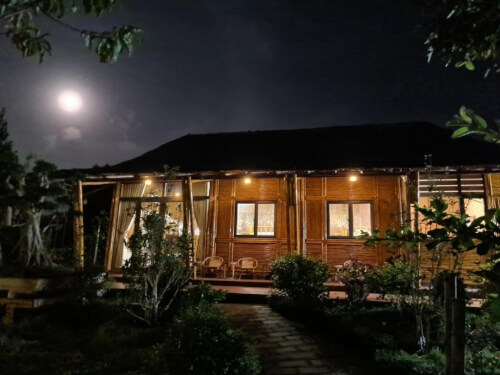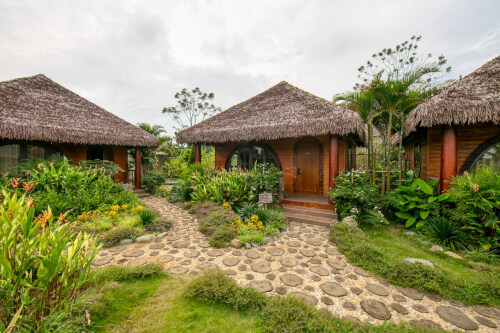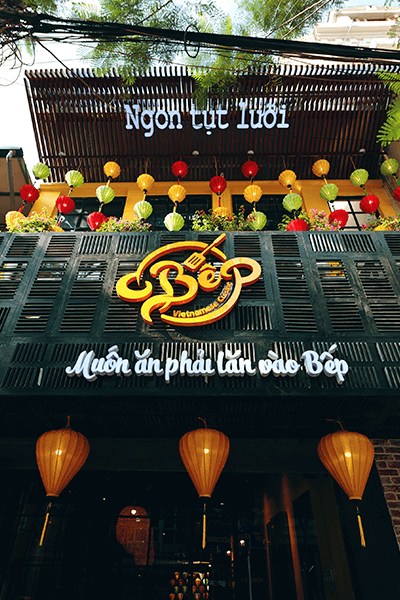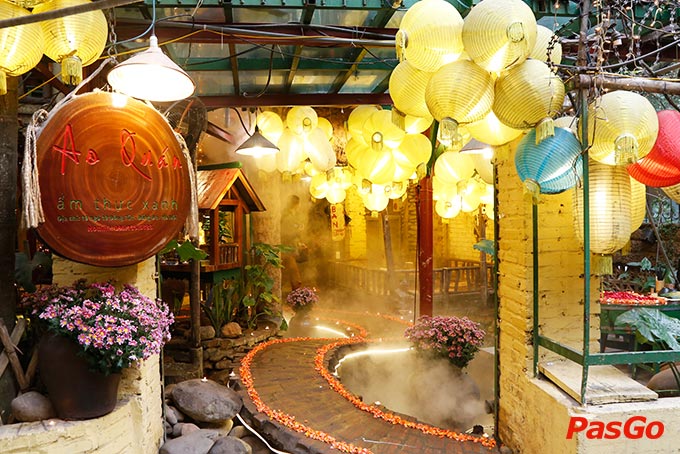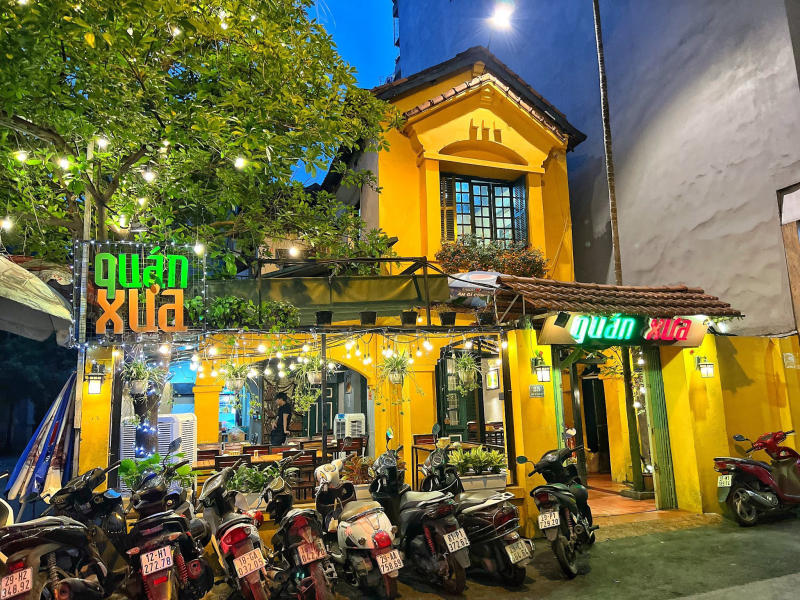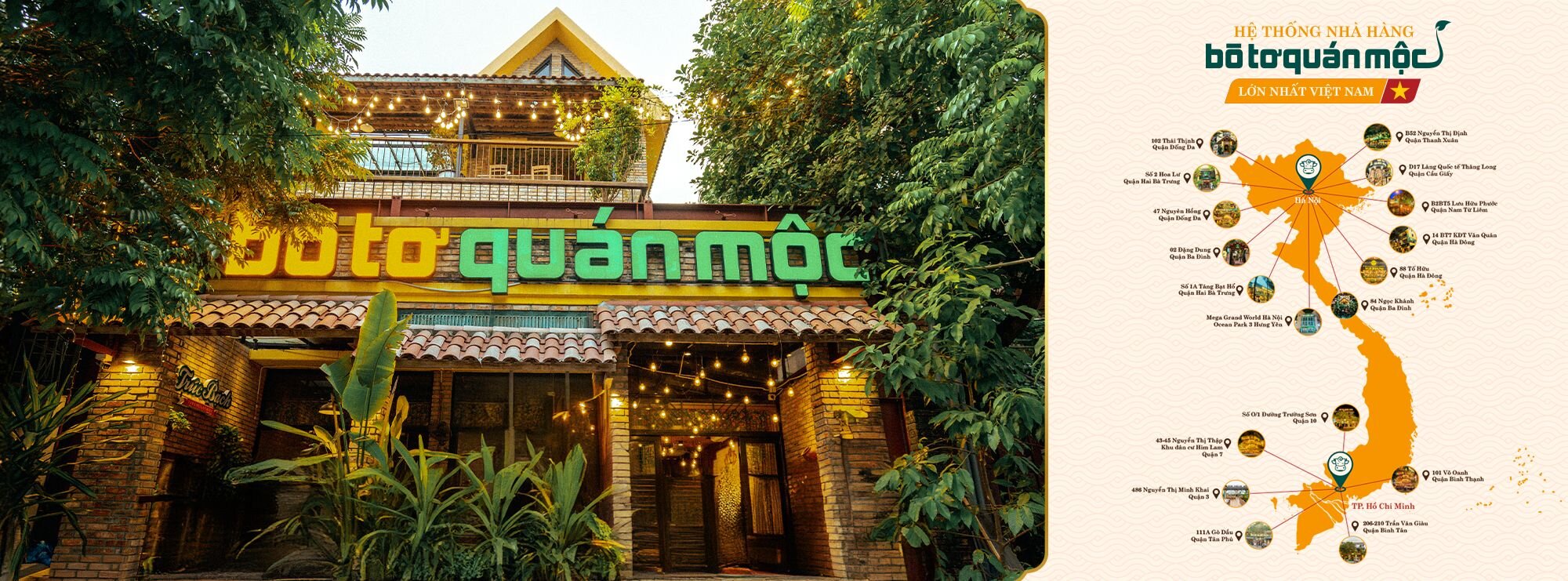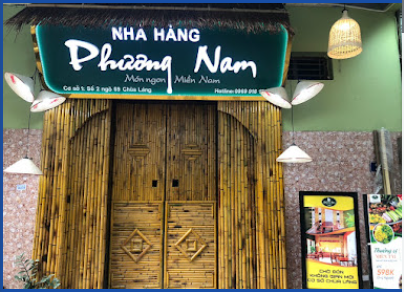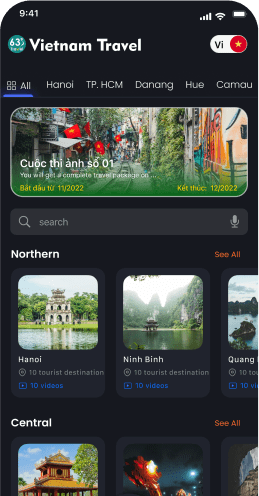Perfume Pagoda is a famous Buddhist spiritual destination in Vietnam. Every year, many tourists come here to pray for peace, luck and enjoy the picturesque scenery.
Hãy nghe
Trần Thuỳ Thanh Xuân (Đồng Nai)
một travel blogger nổi tiếng bật mí .
1. A few things about Huong Pagoda - A famous religious destination in Hanoi
In addition to its common name of Huong Pagoda Hanoi, the pagoda also has another name, Chua Trong - the center of a sacred Buddhist relic complex consisting of many large and small temples and pagodas built in the limestone cliffs of Huong Tich Cave. The path leading to Huong Pagoda is wide and has many mysterious features, the most special of which is Huong Tich Cave, which has the shape of a dragon with its mouth open. On the cliff there are many ancient Chinese characters from 1770.
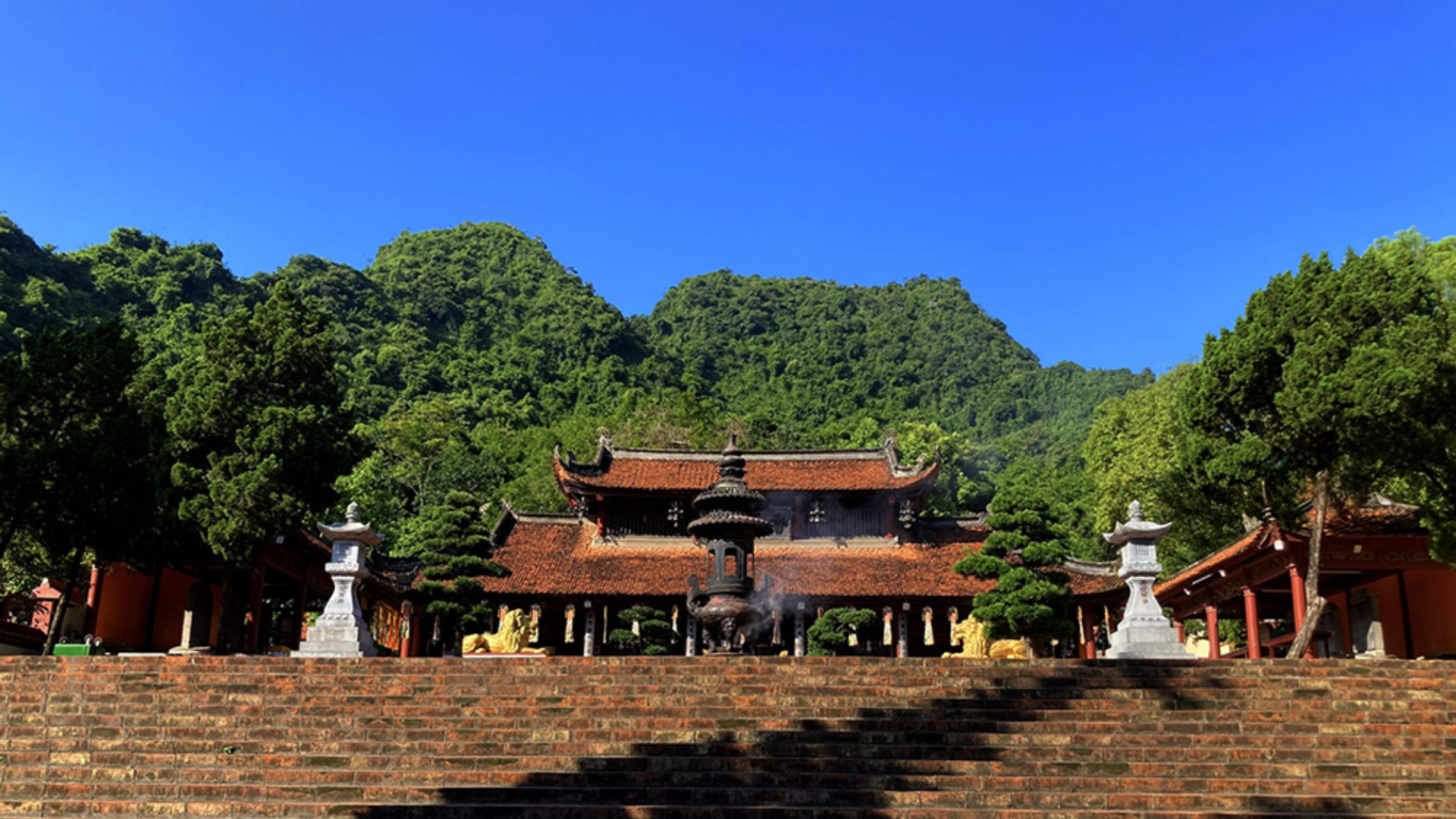
(Source: Collector)
Inside the cave are many Buddha statues carved from green stone such as the Buddha statue and the Guanyin statue. Pilgrims believe that touching the stalactites growing in the cave will bring good luck. The air inside the pagoda is very cool and fresh, helping tourists feel serene and peaceful. The scene here is most bustling during the Huong Pagoda festival, which lasts from January to April.
You should also take the time to stop and enjoy the scenery on the way to the temple as the scenery is very interesting, dotted with fruit trees including apricots and medicinal herbs grown by the locals. Other temples to visit in the complex include Vong Temple, Thuyet Kinh Cave and Thien Son Pagoda.
2. Where is Huong Pagoda?
Huong Pagoda is not only a complex of temples, pagodas, and shrines on Huong Son Mountain, but also a famous spiritual and tourist destination in Northern Vietnam. Located in Huong Son Commune, My Duc District, Hanoi, Huong Pagoda is about 70km from the center of the capital and can be reached by motorbike or car in about 1 hour.
With its peaceful space, charming scenery and long-standing cultural and historical values, Huong Pagoda attracts many tourists, especially during the Huong Pagoda Festival which takes place from January to March of the lunar calendar every year. This is an ideal destination for those who want to seek serenity, worship and explore the beauty of nature.
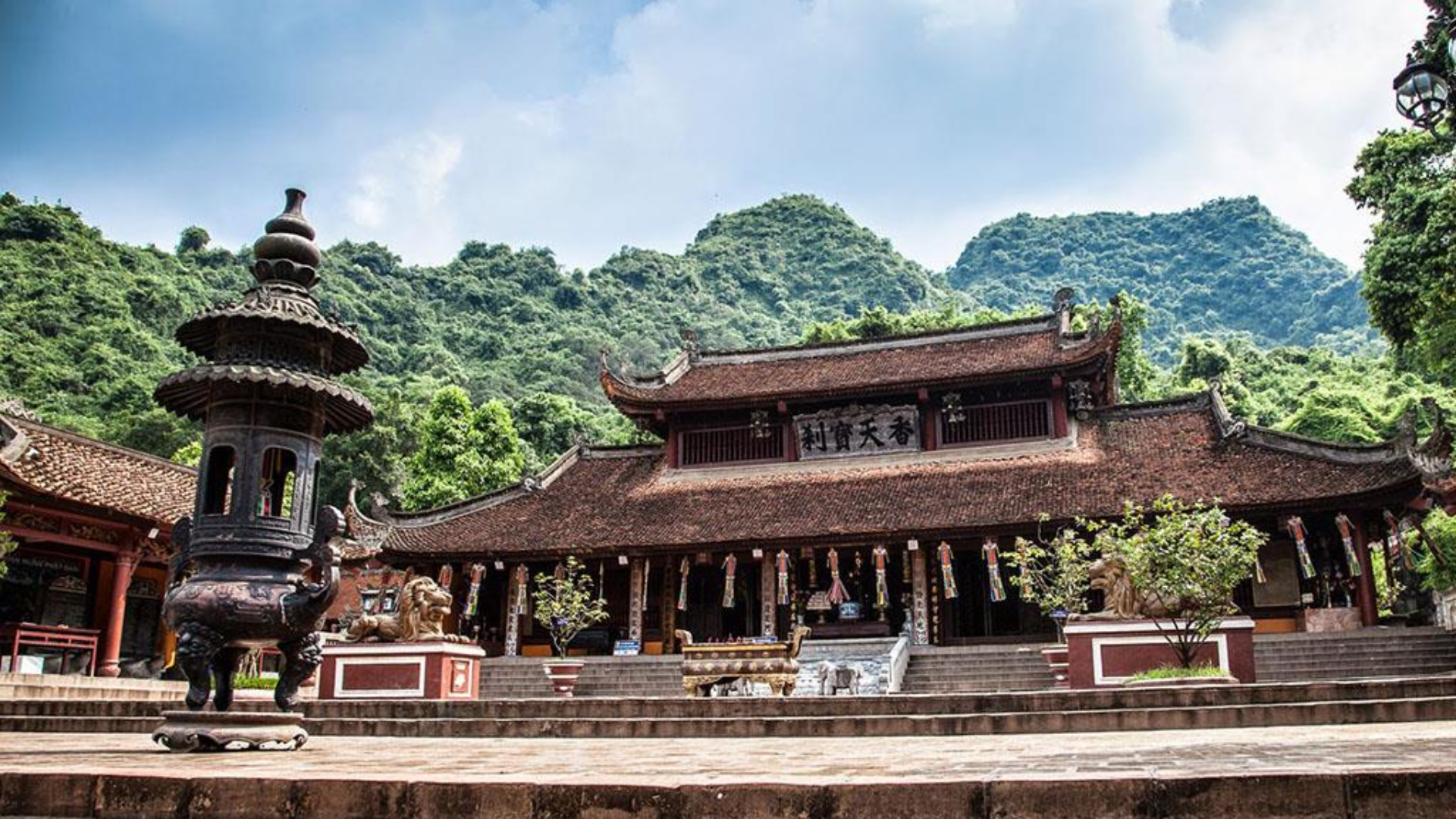
(Source: Collector)
3. When is the best time to visit Huong Pagoda?
In contrast to the crowded festival season, Huong Pagoda is peaceful at other times of the year. To enjoy the quiet space, you can come here in early April, after the festival season, or between October and November, when the red cotton flowers bloom on both sides of Yen Stream. November is also the time when lotus flowers bloom on Yen Stream, adding to the poetic beauty of the stream. These are ideal times to relax and admire the beautiful scenery of Huong Pagoda.
4. Directions to Huong Pagoda in Hanoi
There are many different ways to get to Huong Pagoda from the center of Hanoi. You can choose to take a public bus, ride a motorbike or rent a private car to get there.
4.1. Public Bus to Huong Pagoda
There is a public bus route number 103 running from My Dinh Bus Station to Huong Pagoda and vice versa. The bus operates from 5:00 am to 8:00 am every day with a frequency of 15 minutes/trip. In terms of cost, there is no cheaper option because the ticket is only 9,000 VND/one-way ticket/person. This is a very economical choice, but there are also some inconveniences such as: It takes a long time to travel, having to jostle during rush hour and worse, not being able to find a seat.
4.2. Motorbike
Riding a motorbike is an extremely convenient choice because you can freely take the initiative in your journey without having to wait. After visiting Huong Pagoda, you can visit other nearby destinations to save time for your schedule.
4.3. Rent a private car
The safest, fastest and most comfortable way to get from Hanoi to Huong Pagoda is to rent a private car. If you are traveling with a group of friends or family, rent a private car with a driver. However, you cannot drive straight to the pagoda. From the entrance, you must buy a boat ticket, then you will board the boat at Duc wharf and go along Yen Stream to the main points. This waterway is about 4km long, it will take you from 45 minutes to 1 hour to move from the wharf to the pagoda.
Along the journey on Yen Stream, visitors will pass by Trinh Temple and some mountains of different shapes. Listen to the stories told by boatmen about the origins and legends of these places. Among them, the route to Huong Tich Cave is the main route and is chosen by most visitors. This route passes through the most famous places of the entire complex. If you go, you should choose this route. If you have more time to stay there overnight, you can explore other routes in the following days.
5. Opening hours of Huong Pagoda in Hanoi
Huong Pagoda opens from 5:00 am to 5:00 pm. For the best experience, visitors should arrive early, especially on weekends or festivals, to avoid crowds and have more time to visit and admire the pagoda. If you go from Hanoi, you can start moving early in the morning to arrive at the boat dock around 7-8 am, just in time for the pagoda to open, and enjoy the fresh air and beautiful natural scenery along the way.
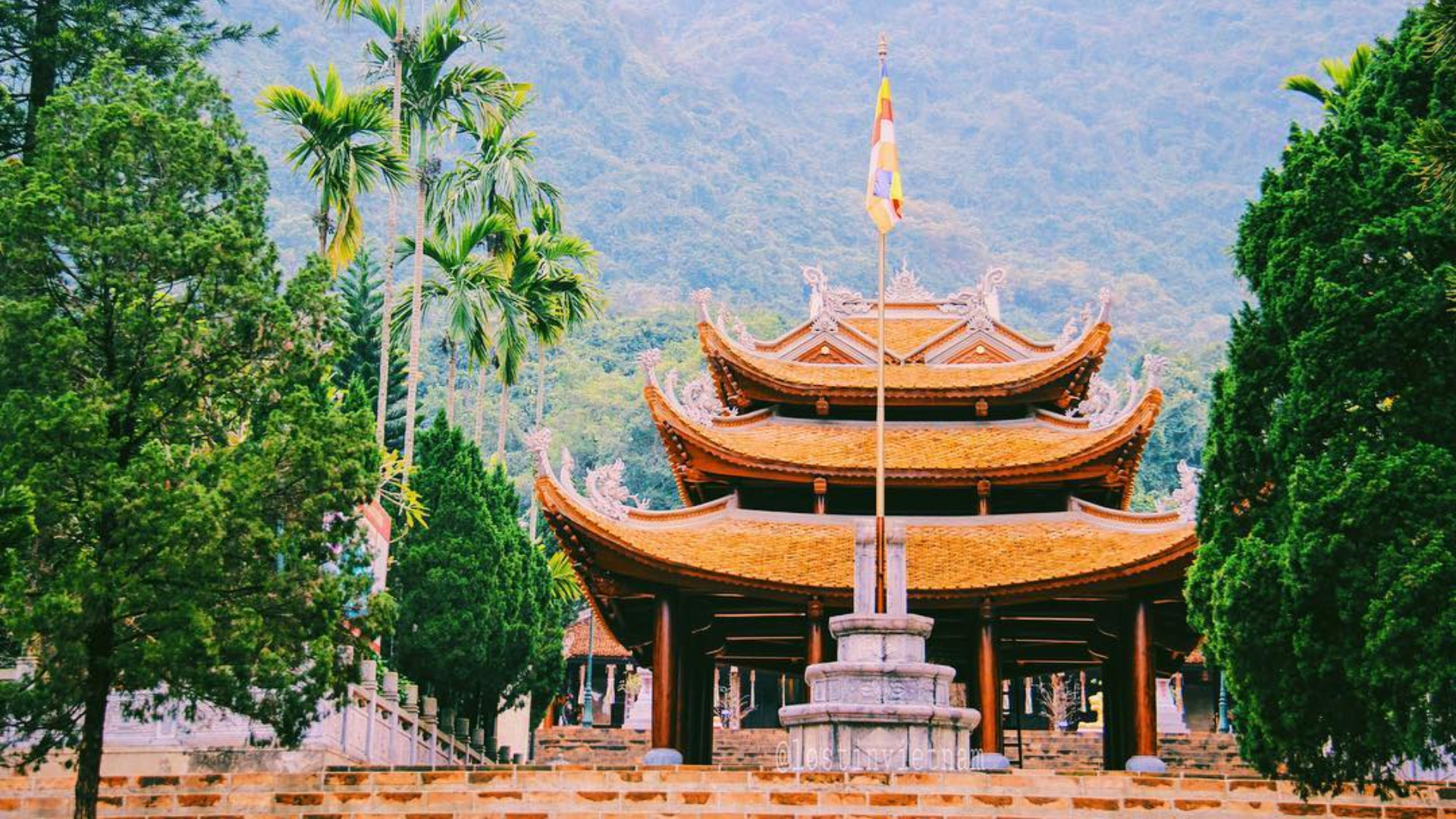
(Source: Collector)
6. How much does a ticket to visit Huong Pagoda cost?
The ticket price to visit Huong Pagoda may change from year to year and time to time. However, usually, the ticket price will include the following types:
- Sightseeing ticket: This is a mandatory ticket to enter the Huong Pagoda area. The ticket price for sightseeing tours usually ranges from 100,000 - 120,000 VND/adult and 50,000 - 60,000 VND/child.
- Boat ticket: To move from the boat dock to Huong Pagoda, you need to buy a boat ticket. The boat ticket price is usually around 50,000 - 70,000 VND/person/trip.
- Cable car ticket: If you want to save time and energy, you can choose to take the cable car to Thien Tru Pagoda. The cable car ticket price is usually around 150,000 - 220,000 VND/adult/round trip and 100,000 - 150,000 VND/child/round trip.
- Note:
+ Ticket prices may change depending on the festival season or promotional programs.
+ Children under 1.2m are usually free of sightseeing tickets and boat tickets.
+ The elderly, the disabled and other priority groups may receive discounted tickets.
+ For exact information on ticket prices, you should contact the Huong Pagoda management board directly or refer to reputable travel websites before visiting.
7. The unique history of Huong Pagoda
Huong Pagoda has a long history, believed to date back to the Tran Dynasty (13th-14th century). During the Later Le Dynasty, the pagoda was rebuilt and expanded, becoming a large and sacred Buddhist architectural complex. However, during the war, the pagoda was severely damaged. It was not until 1988, under the direction of Venerable Thich Vien Thanh, that the pagoda was restored and restored to its original beauty.
The architecture of Huong Pagoda bears the strong imprint of Huong Tich Pagoda in Ha Tinh, a famous ancient pagoda on Huong Tich peak of the Hong Linh mountain range. This architectural similarity originates from an interesting historical story.
During the Le - Trinh Dynasty, kings and concubines often made pilgrimages to Huong Tich Pagoda to pray and enjoy the beautiful scenery. However, due to the great geographical distance between Thang Long citadel and Huong Tich pagoda, Lord Trinh decided to build a similar pagoda near the citadel for the convenience of concubines and mandarins. Huong Pagoda in Hanoi was born from that time, not only a simple copy of Huong Tich pagoda but also has its own unique features, harmoniously combining religious architecture and majestic natural mountain landscapes. Today, Huong Pagoda is a famous spiritual and tourist destination, attracting a large number of domestic and foreign tourists to visit, worship and explore the traditional cultural beauty of the nation.
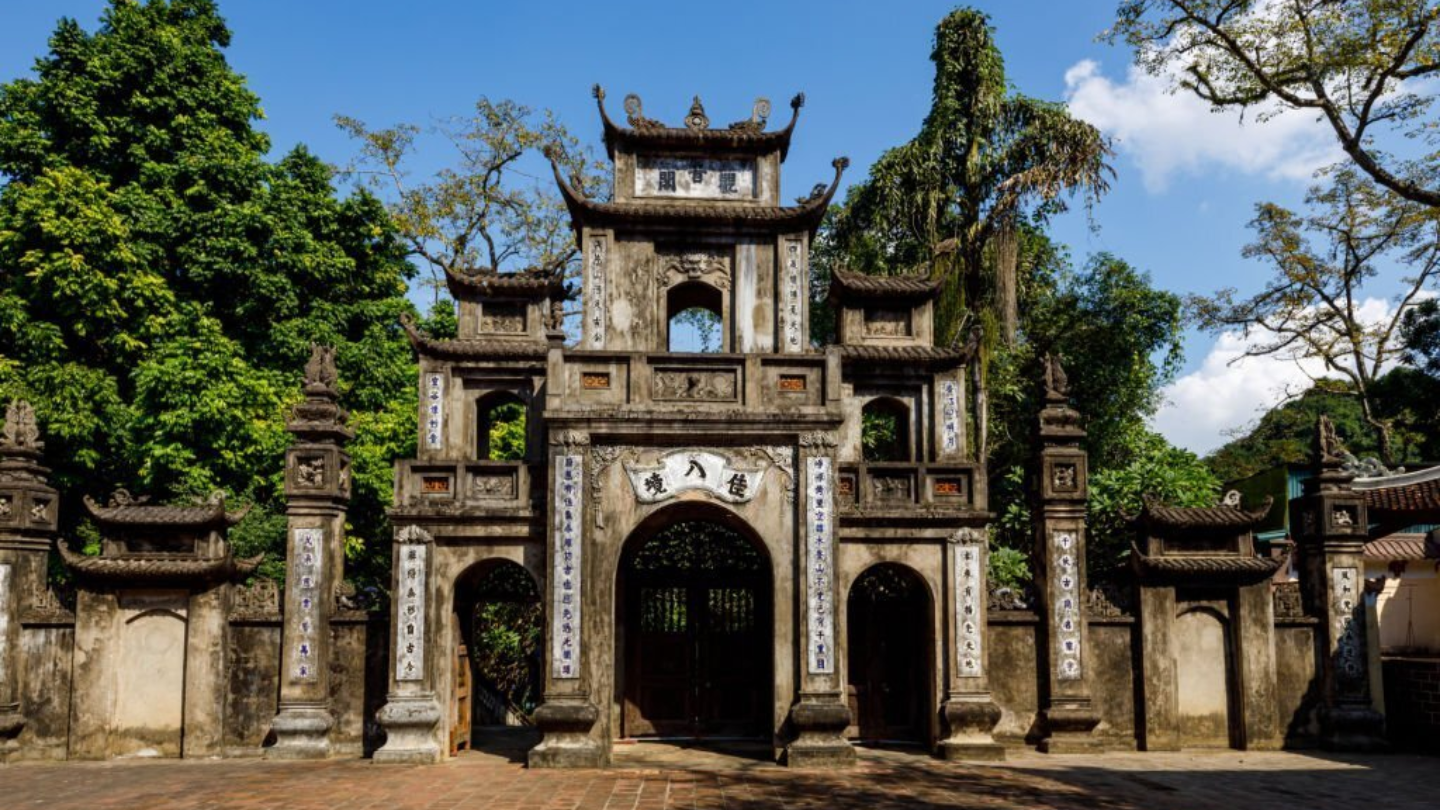
(Source: Collector)
8. The legend of Huong Pagoda
The location of Huong Pagoda is not only famous for its beautiful natural landscape and unique architecture, but is also associated with the folk belief in worshiping Ba Chua Ba. Legend has it that Huong Pagoda is where Princess Dieu Thien, who later attained enlightenment and became Bodhisattva Avalokiteśvara, practiced. According to legend, Princess Dieu Thien was protected by a sacred tiger on her way up the Hong Linh range, where she sought a cave to hide and practice Buddhism. Huong Tich Pagoda in Ha Tinh, believed to have existed since the 13th century, is the place associated with the story of Princess Dieu Thien's practice.
This legend has created a spiritual link between Huong Tich Pagoda in Ha Tinh and Huong Pagoda in Hanoi. Although Huong Pagoda in Hanoi was built later, it still carries within it profound cultural and religious values related to the image of Ba Chua Ba and the story of Princess Dieu Thien.
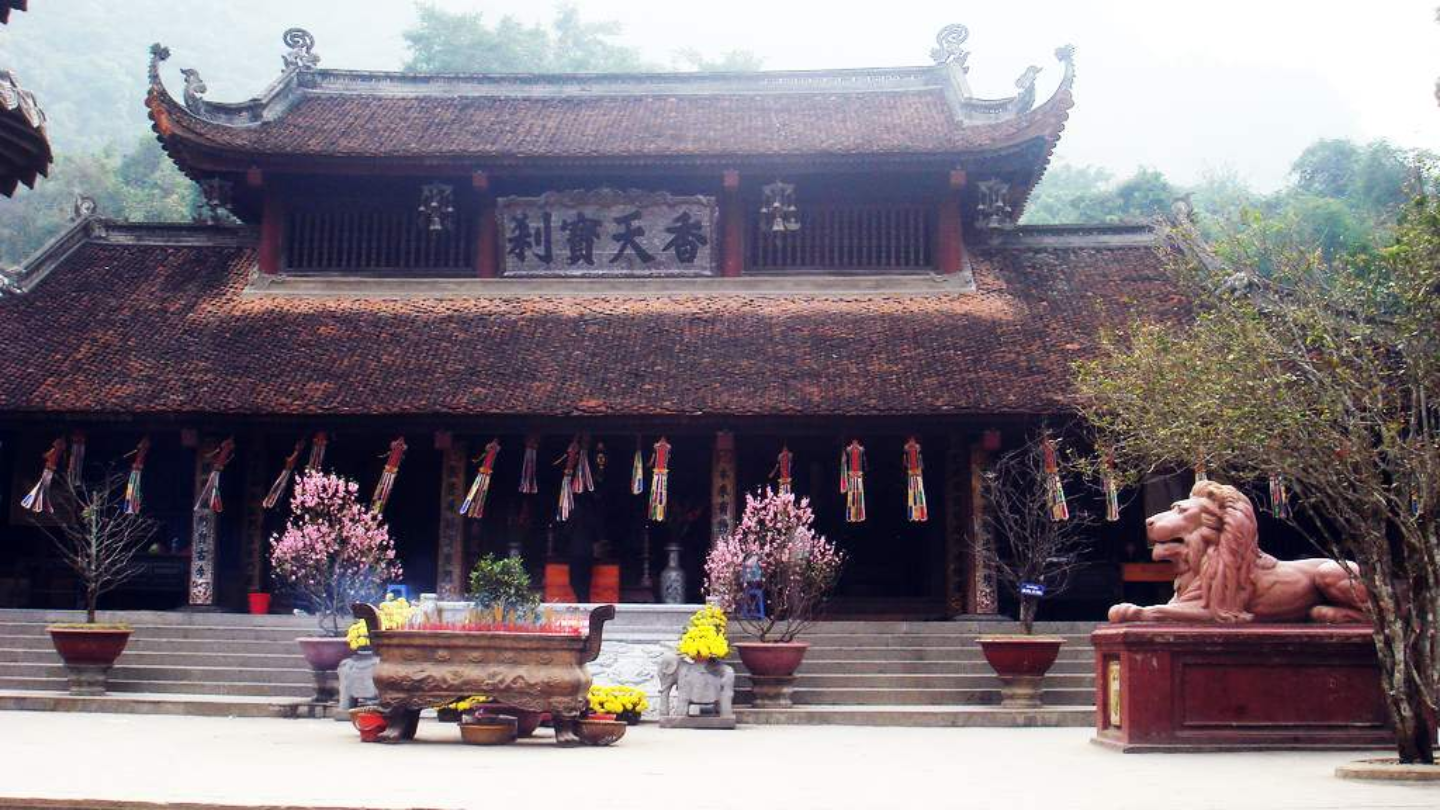
(Source: Collector)
9. Places to visit when visiting Huong Pagoda
Over time, Huong Pagoda today is not just a small pagoda and a cave but has become a large complex of different pagodas, temples, and shrines. Here are the top places to visit in Huong Pagoda, Hanoi that you should not miss.
9.1. Ben Duc Huong Pagoda
The first starting point of the pilgrimage is Ben Duc. Normally, it takes you more than 2 hours to travel from Hanoi to Ben Duc. During the annual festival months, Ben Duc has thousands of rowing boats used to transport tourists. For many visitors, the one-hour boat ride on Yen Vi Stream from Ben Duc is truly the highlight of the trip and has inspired many famous poets.
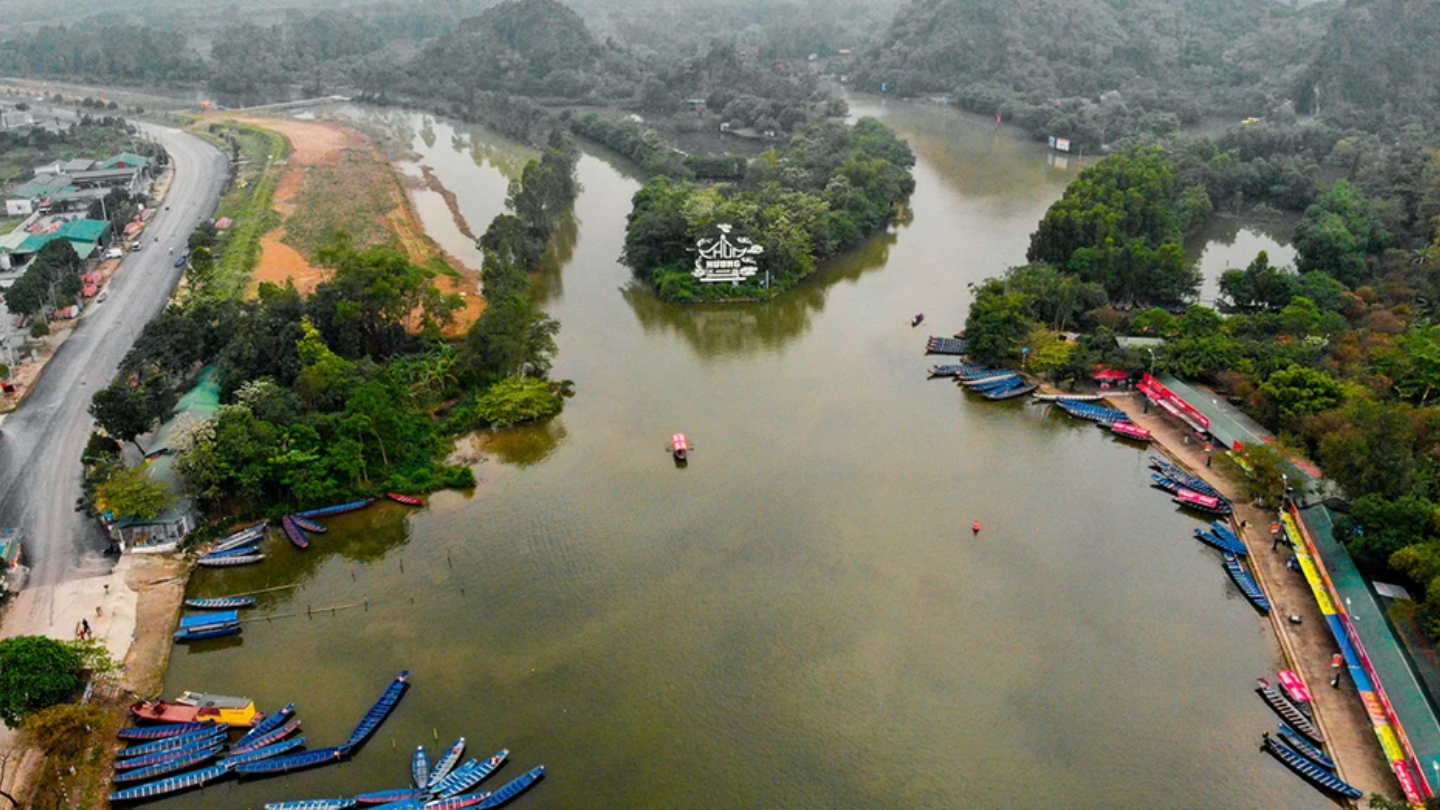
(Source: Collector)
9.2. Yen Stream - Huong Pagoda
Yen Stream flows between two mountains, 3km long. However, when sitting on a boat leisurely enjoying the surrounding scenery, you can feel the stream is endless. Although there is a convenient route from Ben Duc to Huong Mountain, most people choose to take a boat on Yen Vi Stream (or Yen Stream), which is a much more romantic and scenic route to Huong Pagoda.
When traveling along Yen Stream, visitors will admire the beautiful scenery of the green rice fields, jagged limestone mountains to the foot of Huong Mountain. From the boat, you can easily see Phuong Hoang Mountain and Doi Cheo Mountain on the left, which looks like an Indian python. On the right is Ngu Nhac Mountain with Trinh Temple, where visitors stop to burn incense for the Mountain God.
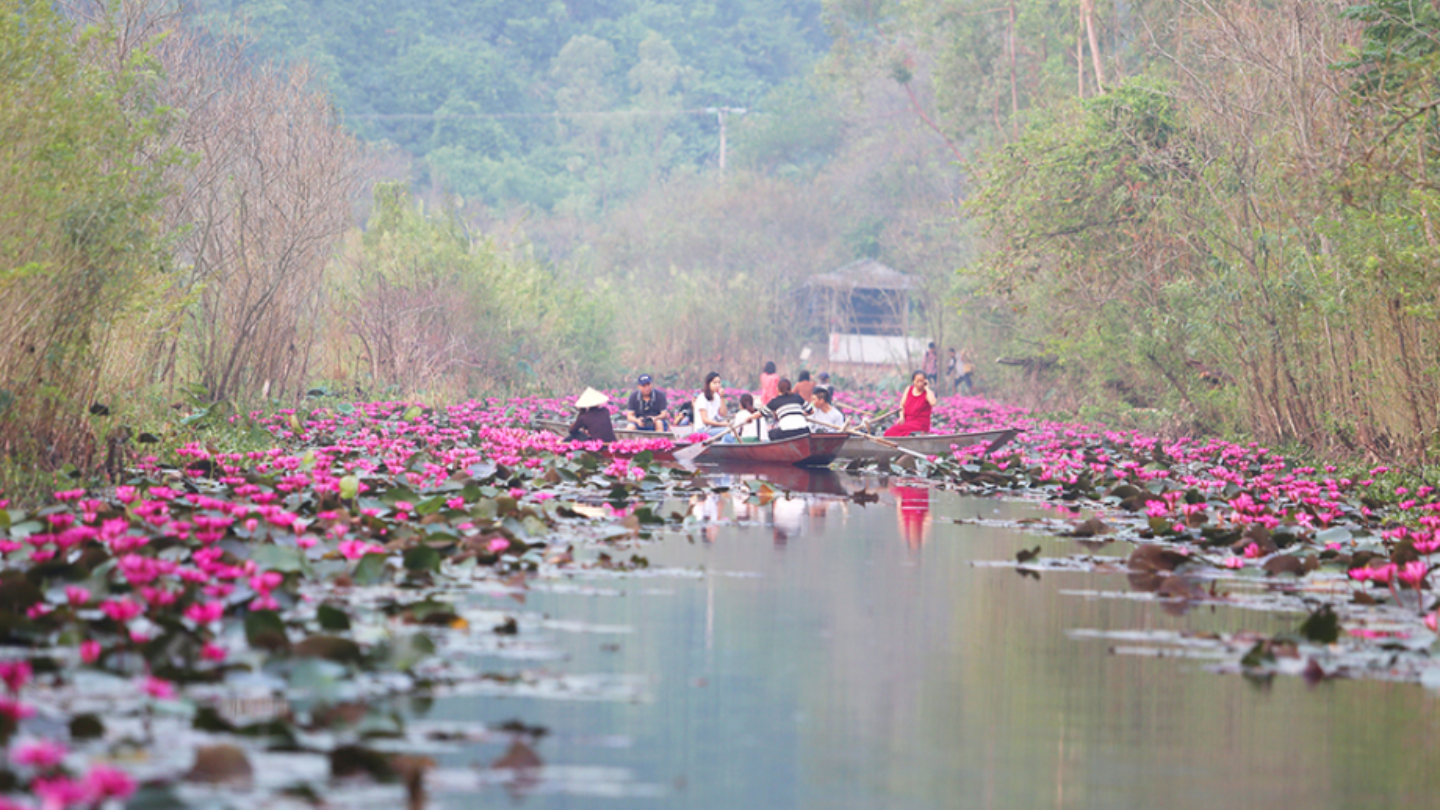
(Source: Collector)
9.3. Trinh Temple - Huong Pagoda
Trinh Temple, also known as Thuong Quan Temple, is about 300m from Ben Duc, and is the first stop of Huong Pagoda. The temple is located right at the foot of Ngu Nhac Mountain, worshiping General Tu Ma, who helped King Hung protect the nation from foreign invaders. The temple was severely damaged during the war against French colonialism in the 20th century and was rebuilt in 1992.
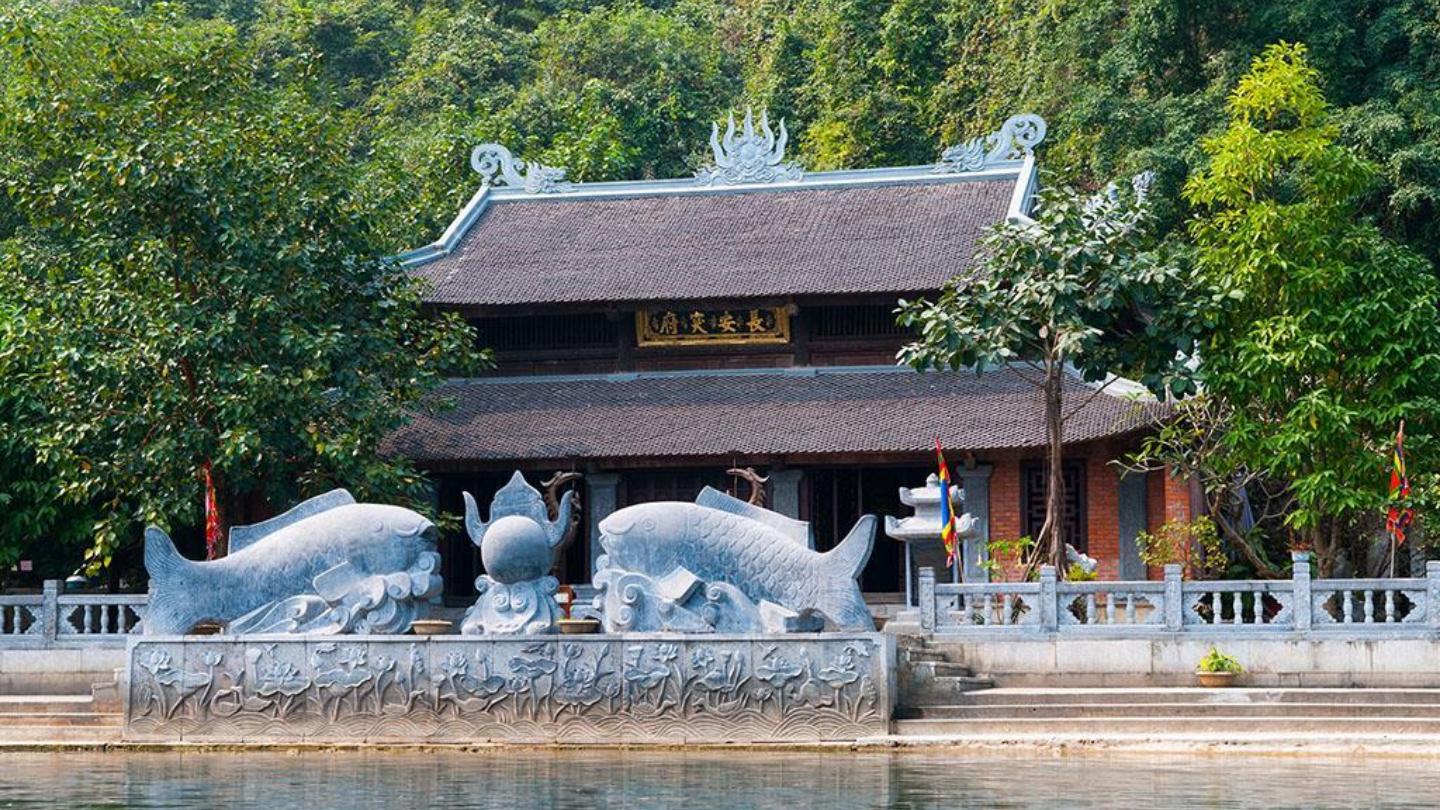
(Source: Collector)
9.4. Huong Tich Cave - Huong Pagoda
Huong Tich Cave is considered the main destination for pilgrimage groups to the Huong Pagoda complex because it is home to Huong Pagoda, also known as "Chua Trong". The giant entrance to the cave as well as the pagoda amazes visitors because the cave looks like an open dragon's mouth. On the wall at the mouth of the cave is engraved an ancient Vietnamese inscription: "Nam Thien De Nhat Dong", dating from 1770. This inscription can be roughly translated as "The Most Beautiful Cave of the South". “Southern World” refers to the country of Vietnam because it is geographically located in the South of China.
Entering Trong Pagoda, visitors will be amazed by many statues of Buddha, Quan The Am and other Buddha Gods carved from green stone. The most impressive statue here is the Statue of Quan Am. “Quan Am’s left leg is straight and her foot rests on a lotus flower, her right leg is bent and supported by a lotus with winding leaves, holding a pearl in her hand”. In addition, inside the cave there are many natural stalactites and stalagmites. Over the years, some of them have become smooth because people believe that if they are touched and rubbed, miracles and good luck will come to their lives.
There are 2 options to get to Huong Tich Cave: climbing the mountain or taking the cable car. The journey of climbing and climbing the slope lasts an hour with thousands of steep stone steps, requiring very good physical strength of the climber. There are some slippery stone steps at times so visitors should be careful and wear comfortable shoes or slippers. However, it is quite a memorable experience with breathtaking scenery along the way. You can feel the lush green trees all around you and sometimes you can catch a glimpse of the daily life of local farmers.
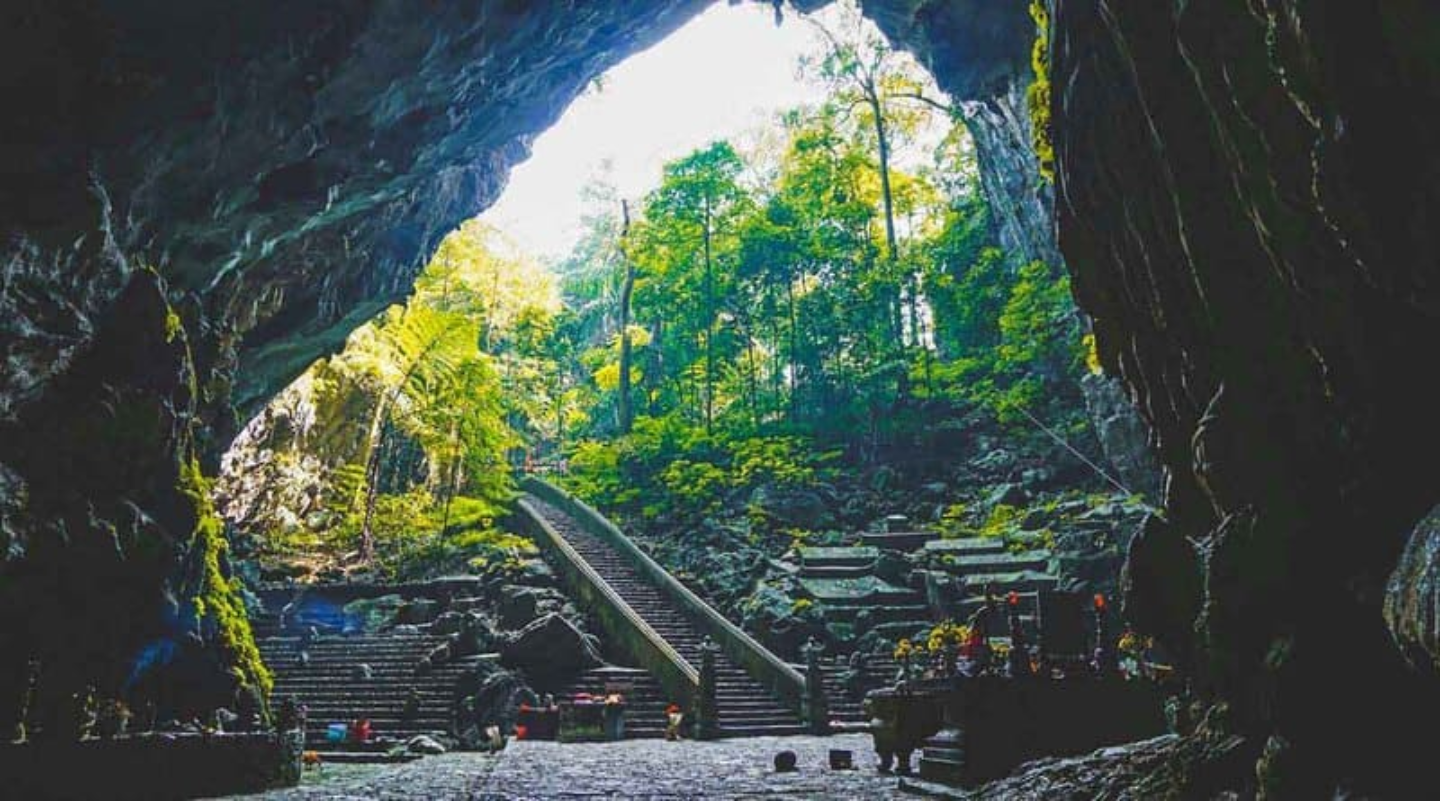
(Source: Collector)
10. Huong Pagoda Festival - The most anticipated event of the year
Huong Pagoda Festival is one of the largest and longest religious events in Vietnam, taking place from January 6 to March 6 of the lunar calendar every year, with the main festival period from February 15 to 20 of the lunar calendar. The festival attracts millions of Buddhists and tourists from all over the world, especially people from the North.
During the festival, various spiritual activities are held, including incense offering, procession and meditation. The festival not only has a strong Buddhist color but also shows the interweaving of the three major religions of Vietnam: Buddhism, Confucianism and Taoism. Huong Pagoda is considered a sacred place where people come to pray for a new year of peace, prosperity, health and luck. In particular, infertile people often come here to pray for children, with the belief that their sincerity will be witnessed and blessed by the gods.
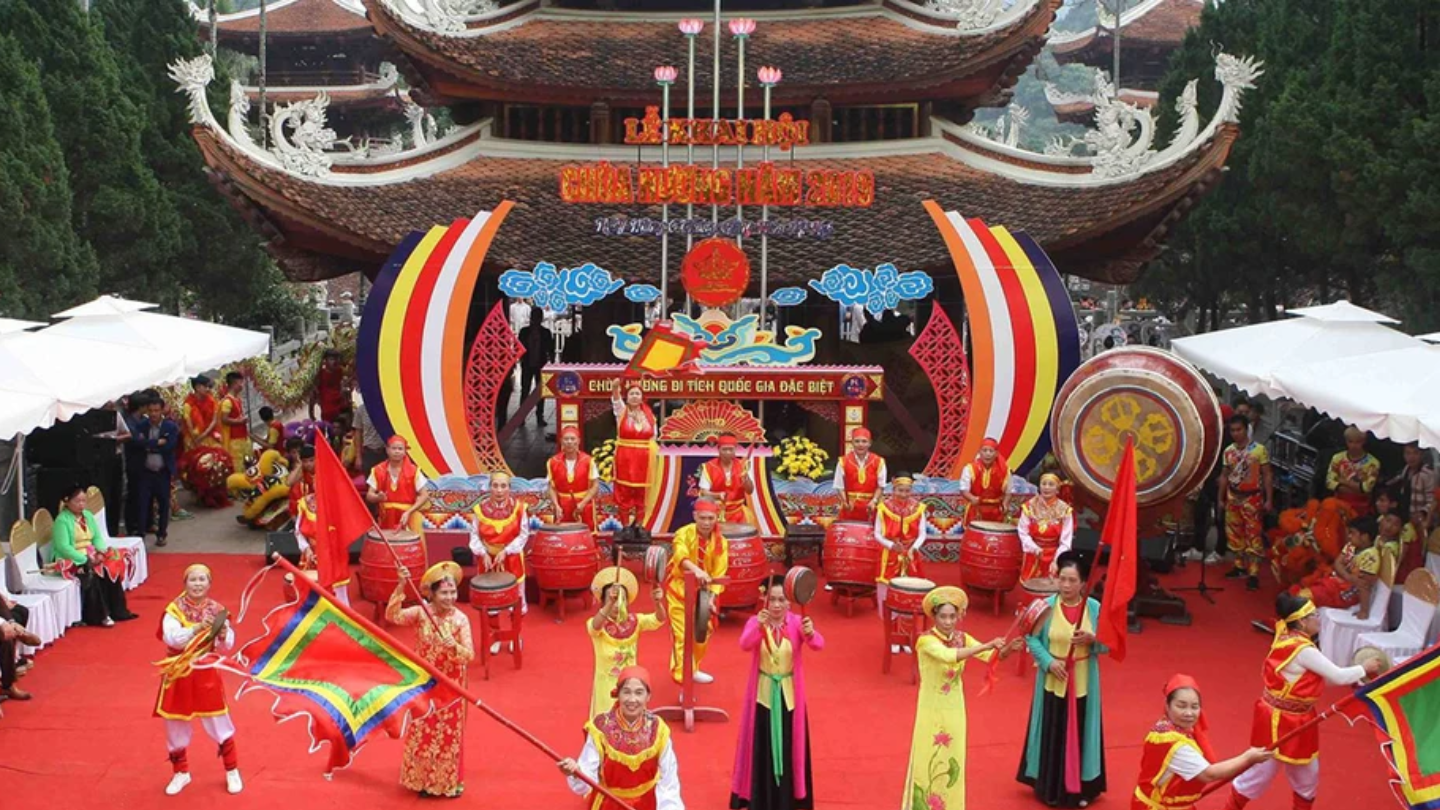
(Source: Collector)
Besides spiritual activities, Huong Pagoda festival is also an opportunity for visitors to explore traditional Vietnamese culture through folk games such as rice cooking contest, tug of war contest... This is an opportunity for everyone to immerse themselves in the vibrant festival atmosphere, experience unique cultural beauty and create memorable memories.
28
Tháng 07,
2024
712
Trần Thuỳ Thanh Xuân (Đồng Nai)
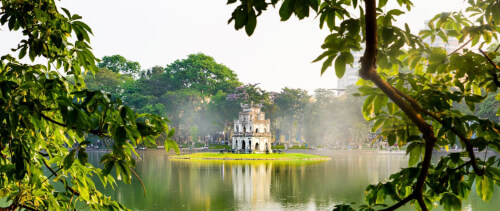 Hà Nội (6)
Hà Nội (6)
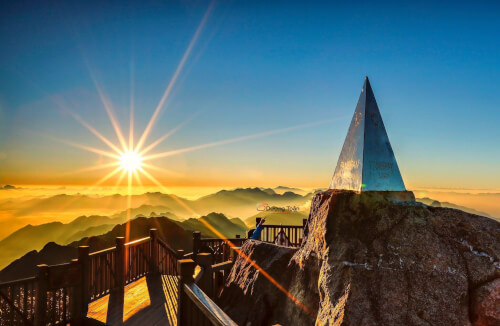 Lào Cai (1)
Lào Cai (1)
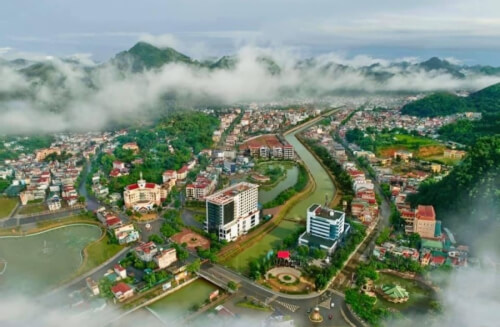 Sơn La (2)
Sơn La (2)
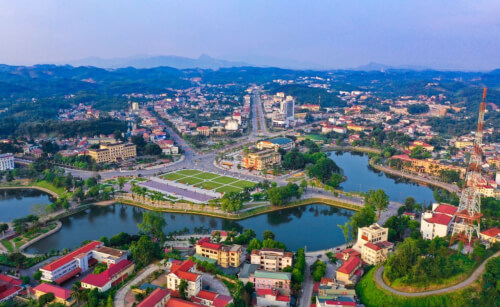 Yên Bái (1)
Yên Bái (1)
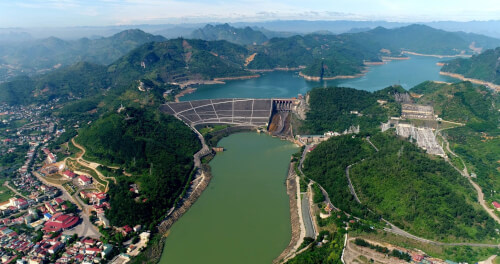 Hòa Bình (1)
Hòa Bình (1)
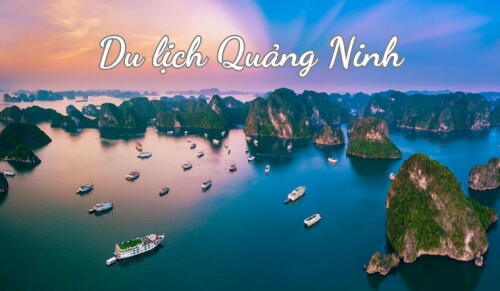 Quảng Ninh (18)
Quảng Ninh (18)
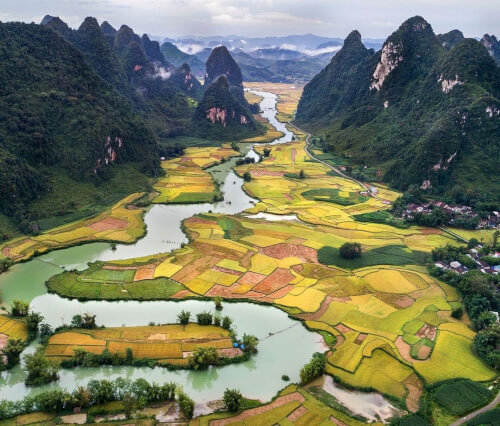 Ninh Bình (1)
Ninh Bình (1)
 Quảng Bình (2)
Quảng Bình (2)
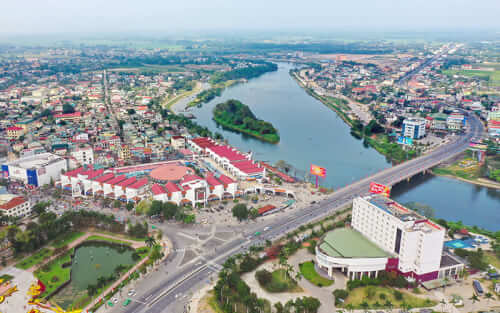 Quảng Trị (1)
Quảng Trị (1)
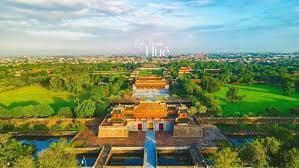 Thừa Thiên Huế (17)
Thừa Thiên Huế (17)
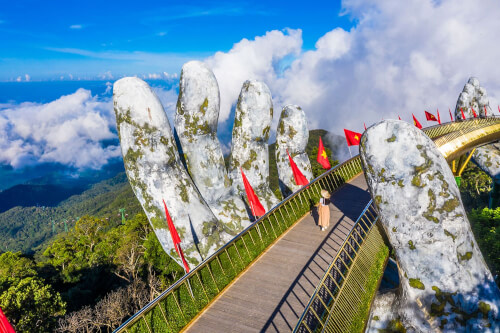 Đà Nẵng (24)
Đà Nẵng (24)
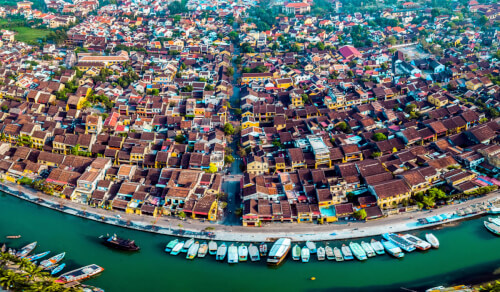 Quảng Nam (16)
Quảng Nam (16)
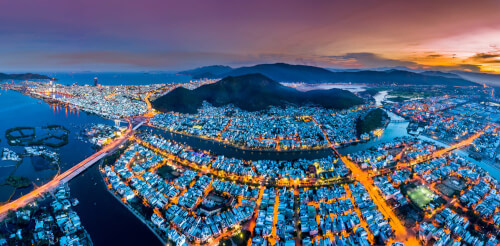 Bình Định (1)
Bình Định (1)
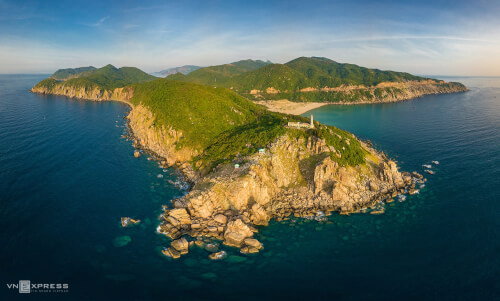 Phú Yên (1)
Phú Yên (1)
 Khánh Hòa (12)
Khánh Hòa (12)
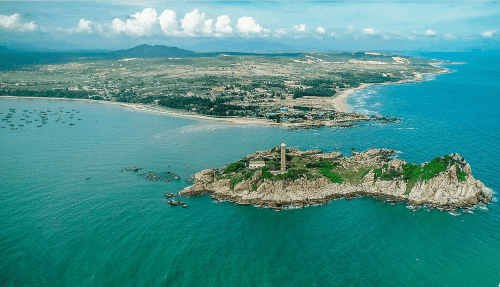 Bình Thuận (1)
Bình Thuận (1)
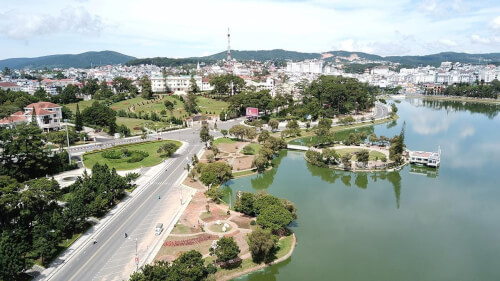 Lâm Đồng (7)
Lâm Đồng (7)
 TP Hồ Chí Minh (3)
TP Hồ Chí Minh (3)
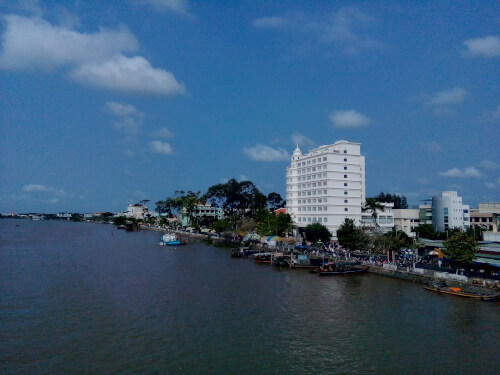 Bến Tre (3)
Bến Tre (3)
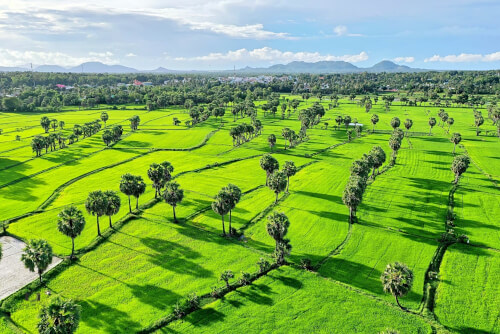 An Giang (1)
An Giang (1)
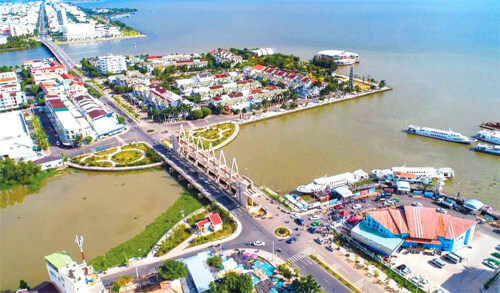 Kiên Giang (4)
Kiên Giang (4)
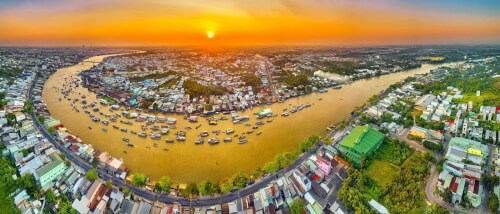 Cần Thơ (3)
Cần Thơ (3)
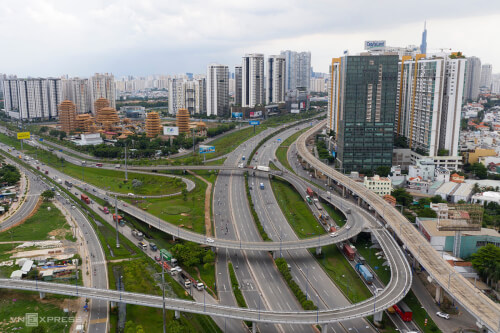 Nước ngoài (3)
Nước ngoài (3)

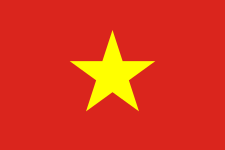 vn
vn en
en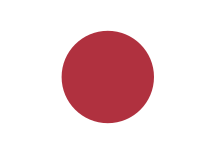 ja
ja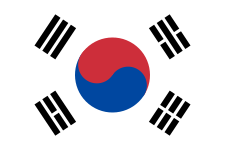 ko
ko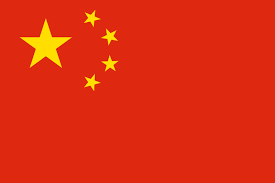 zh
zh


















